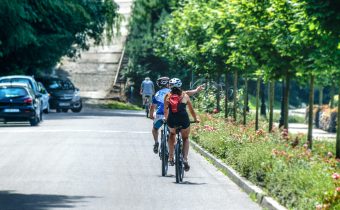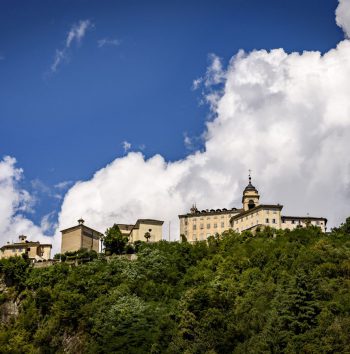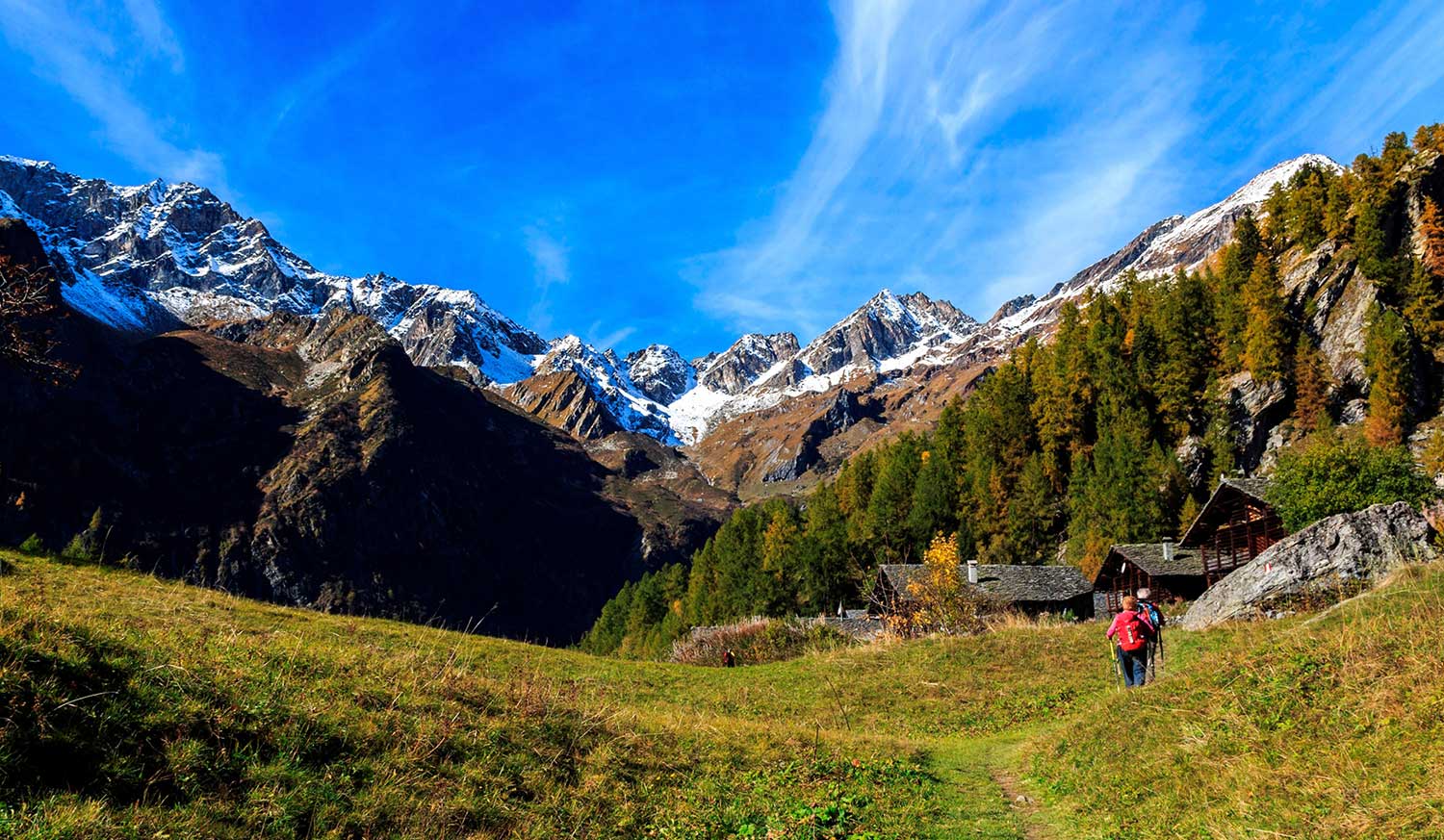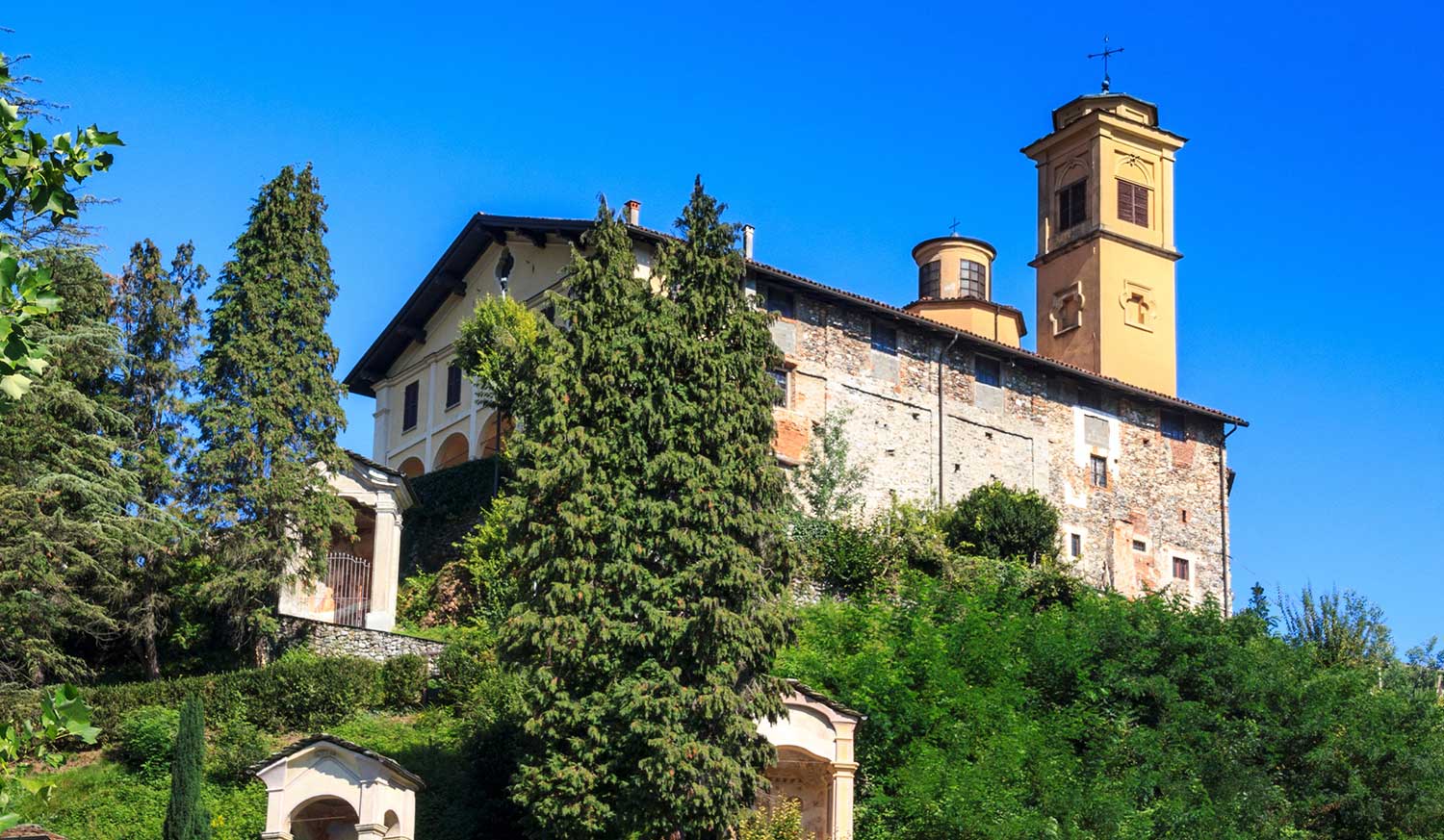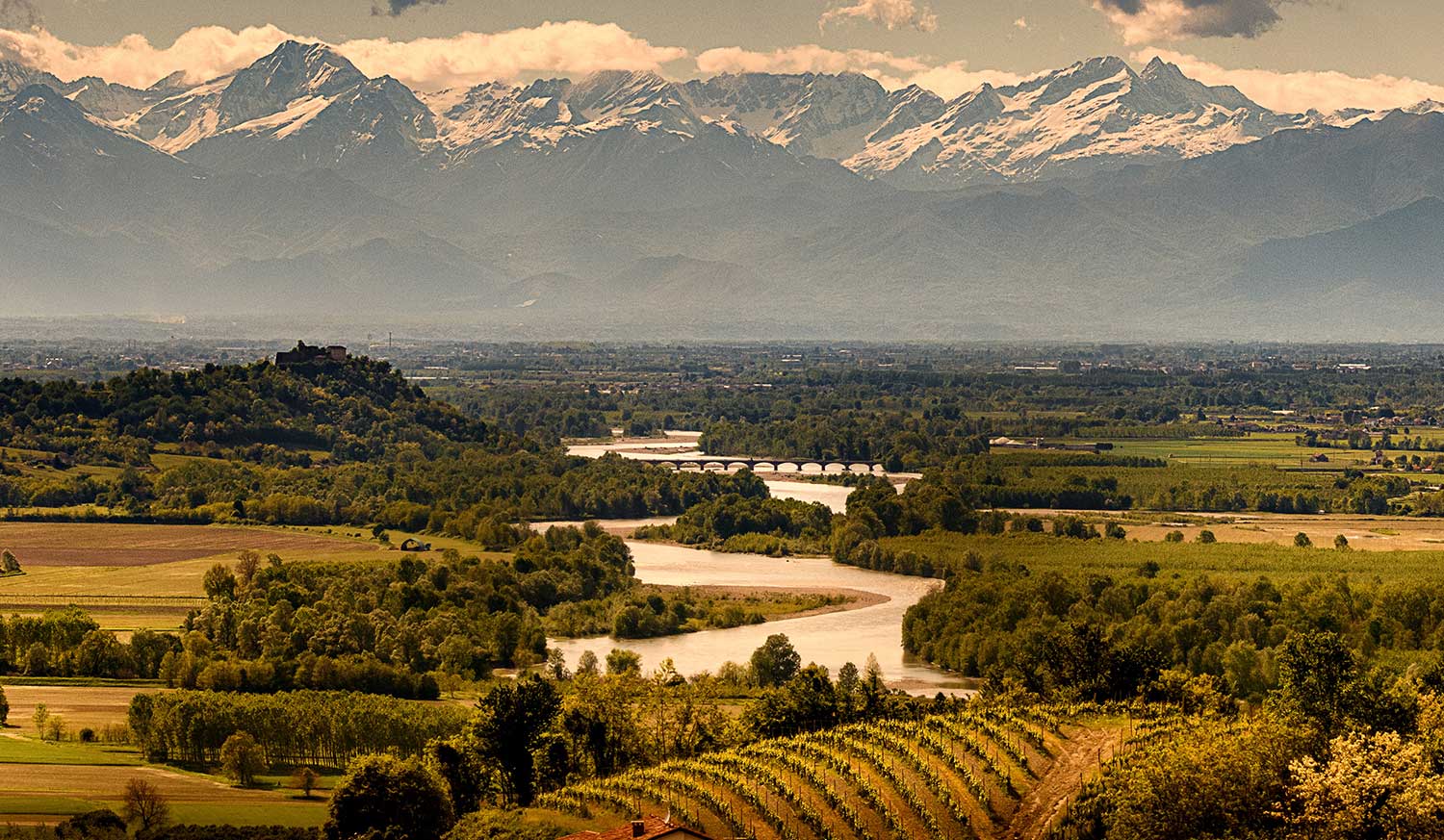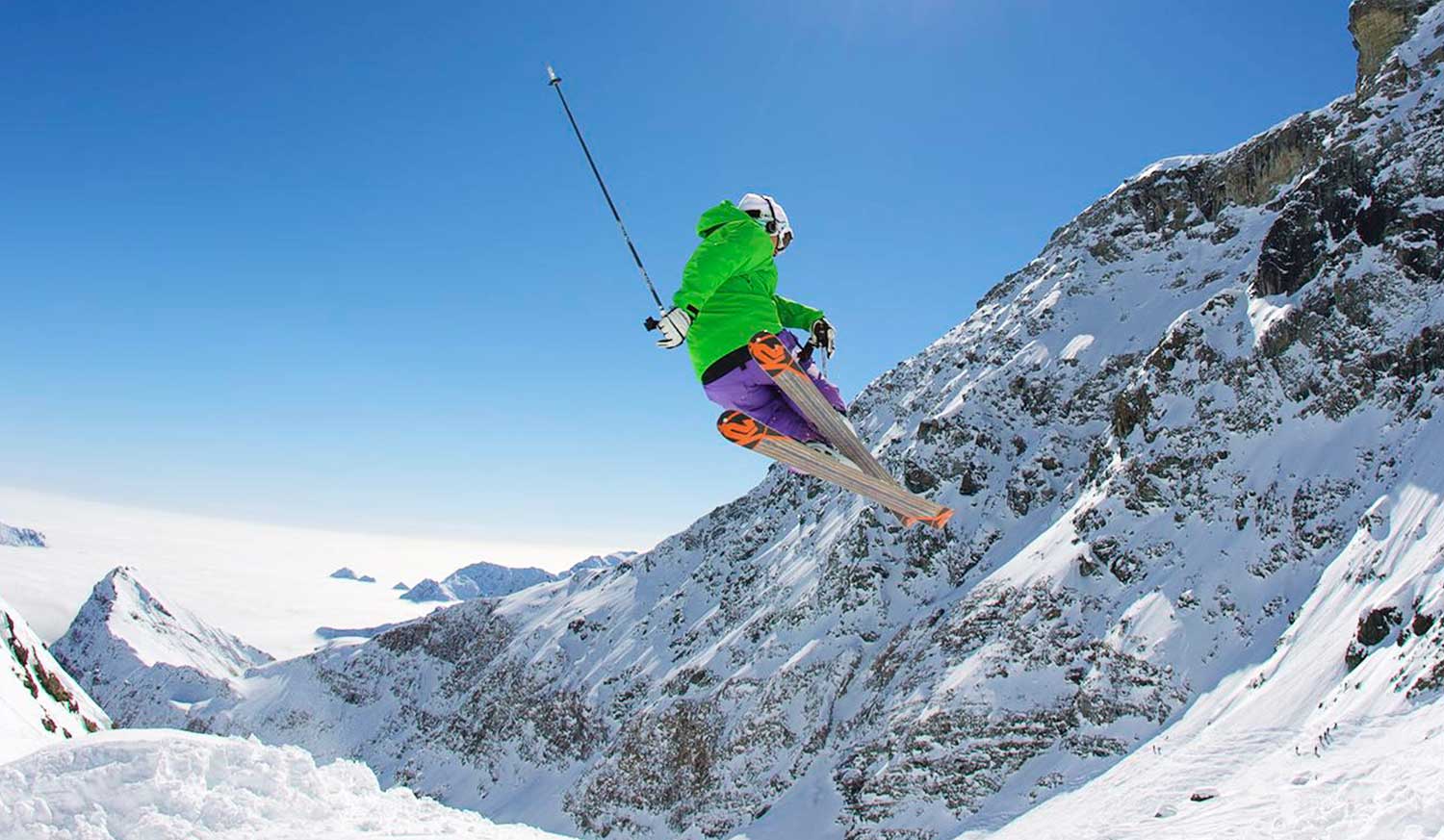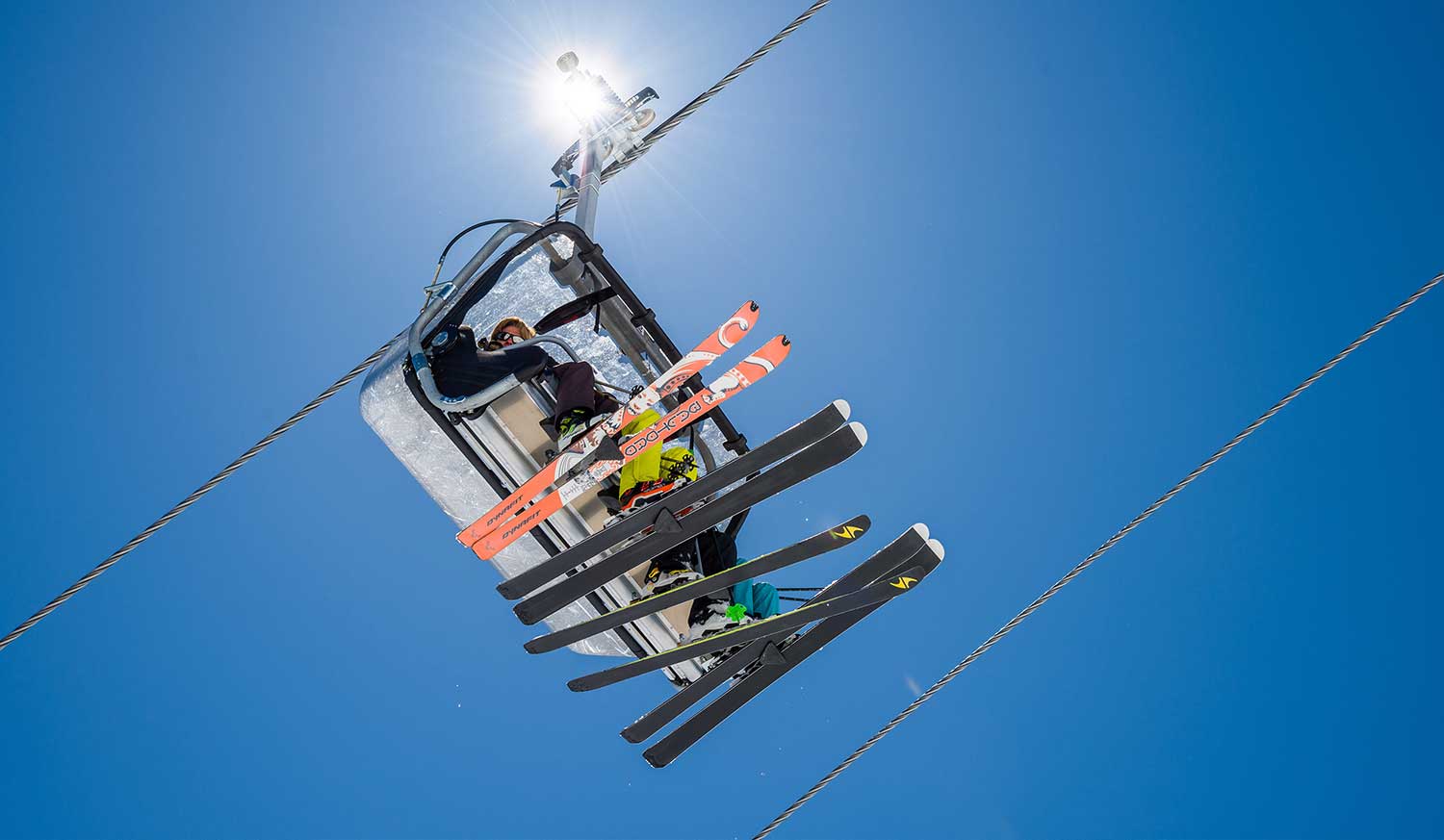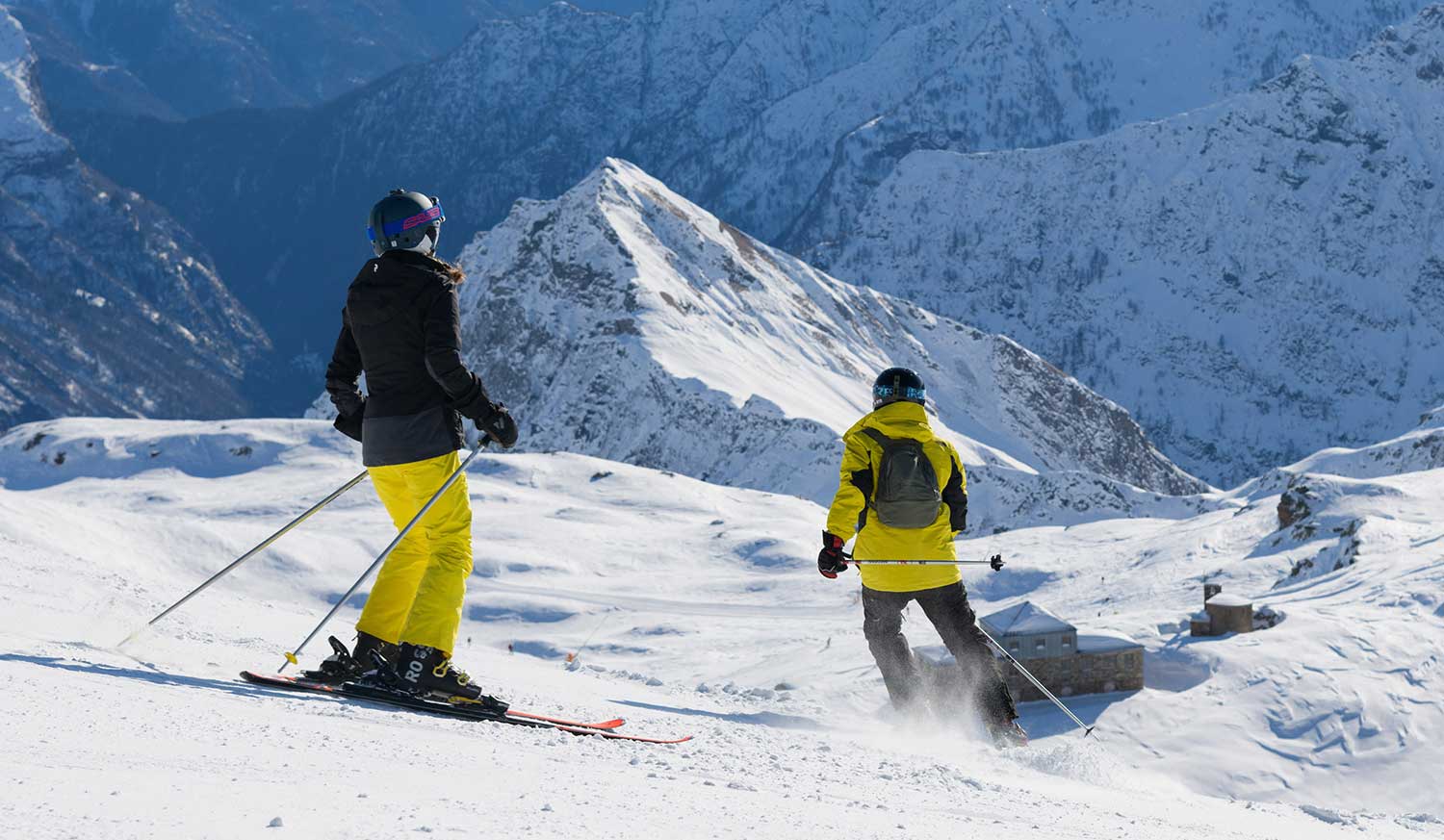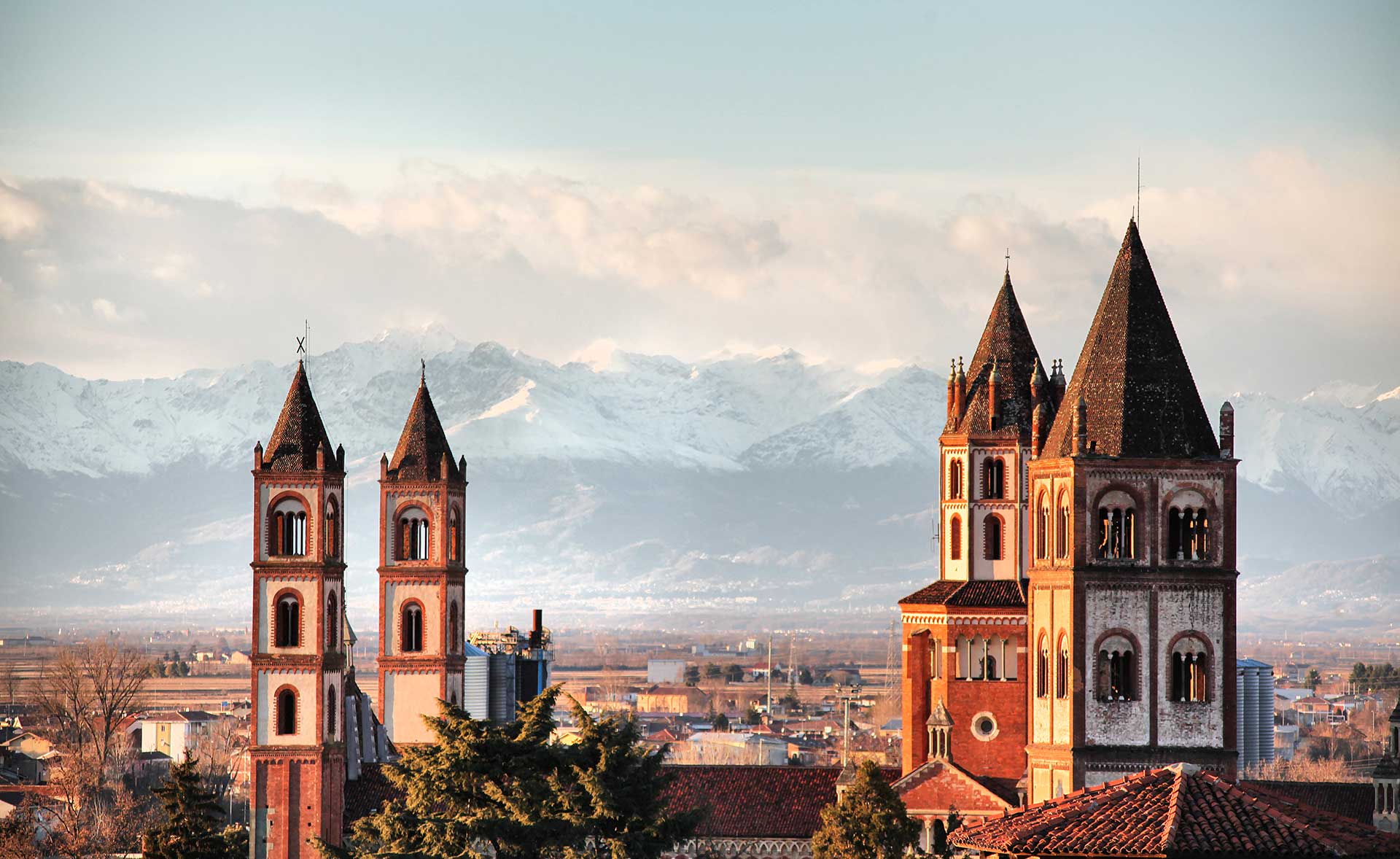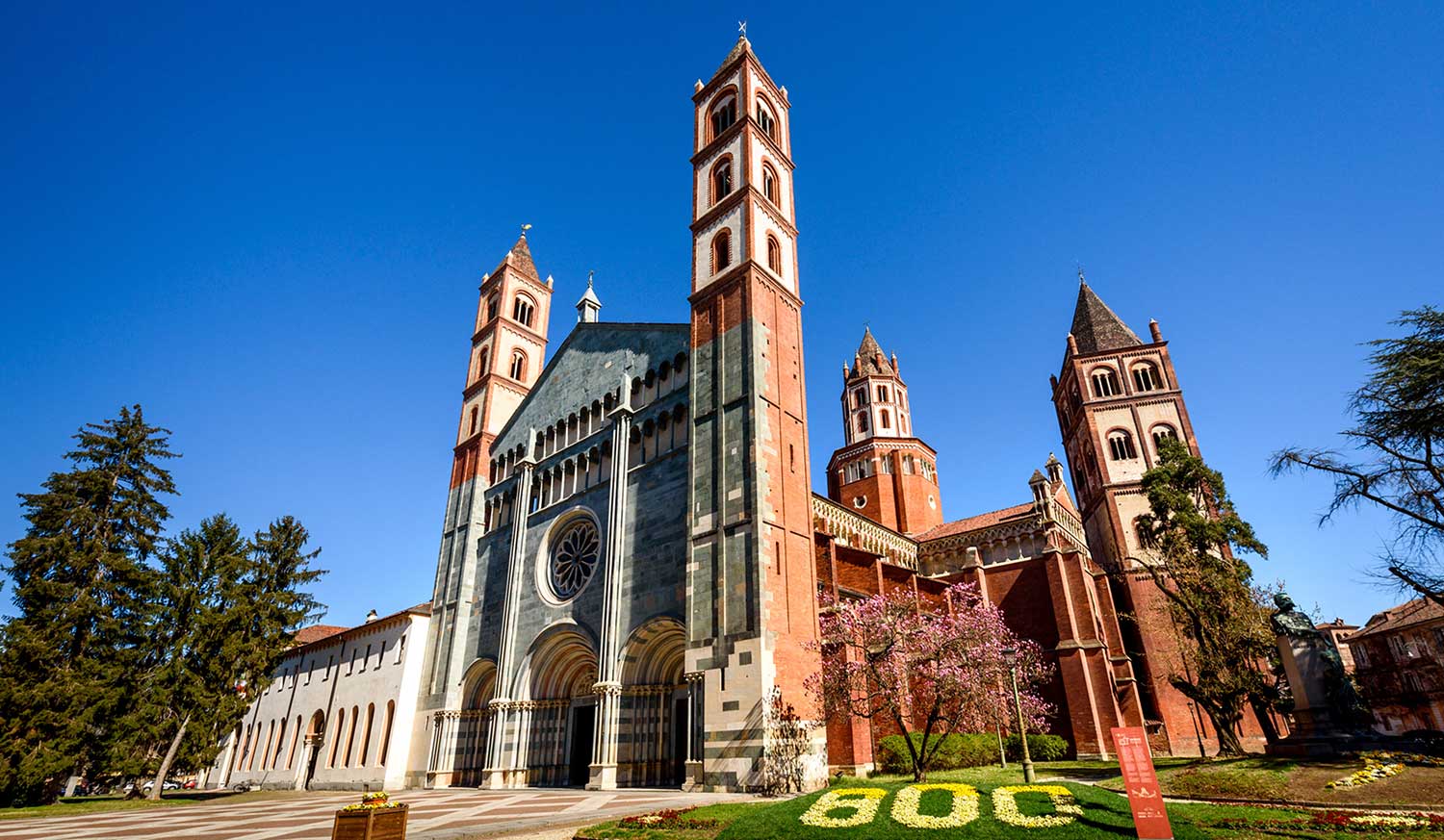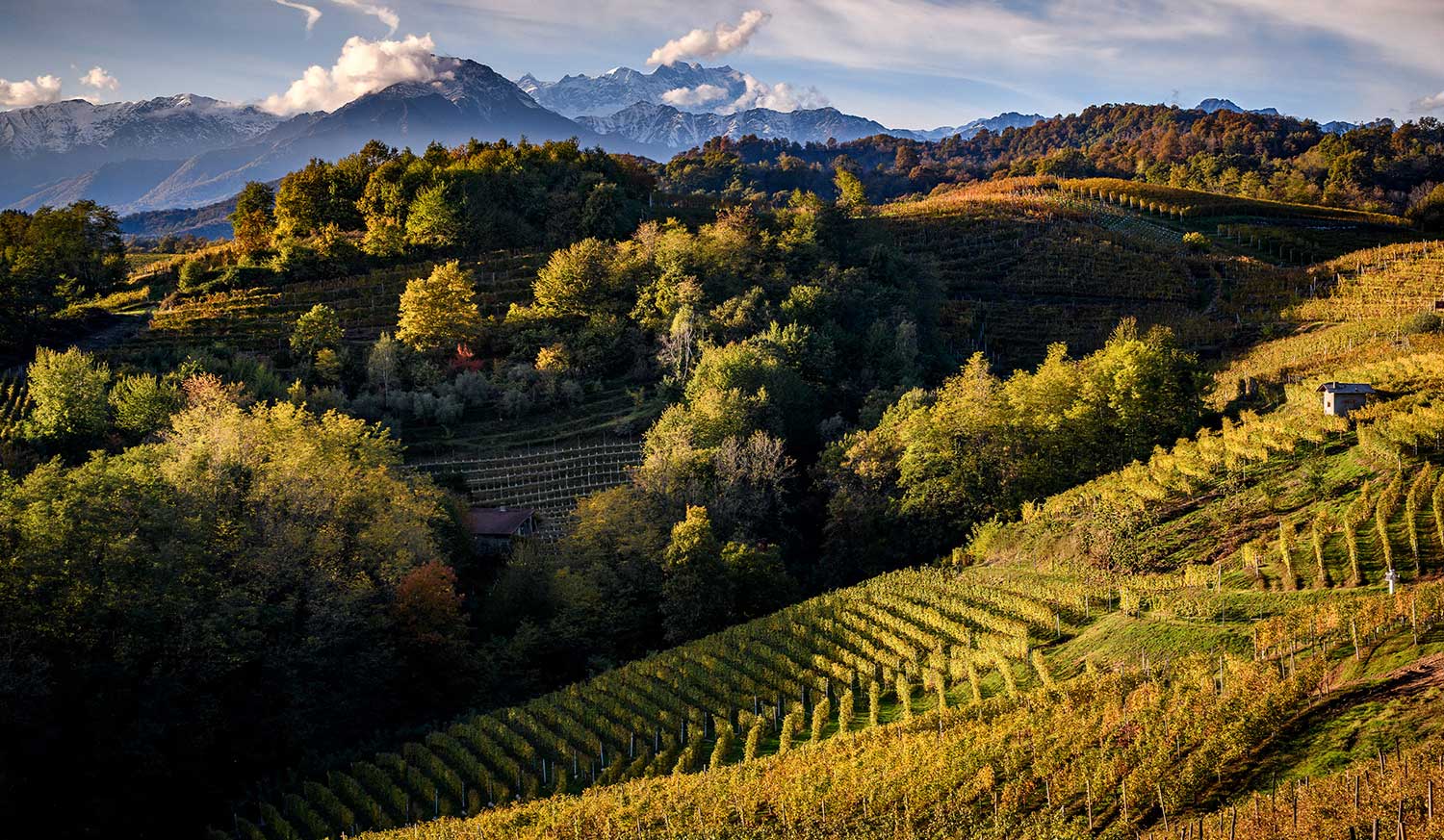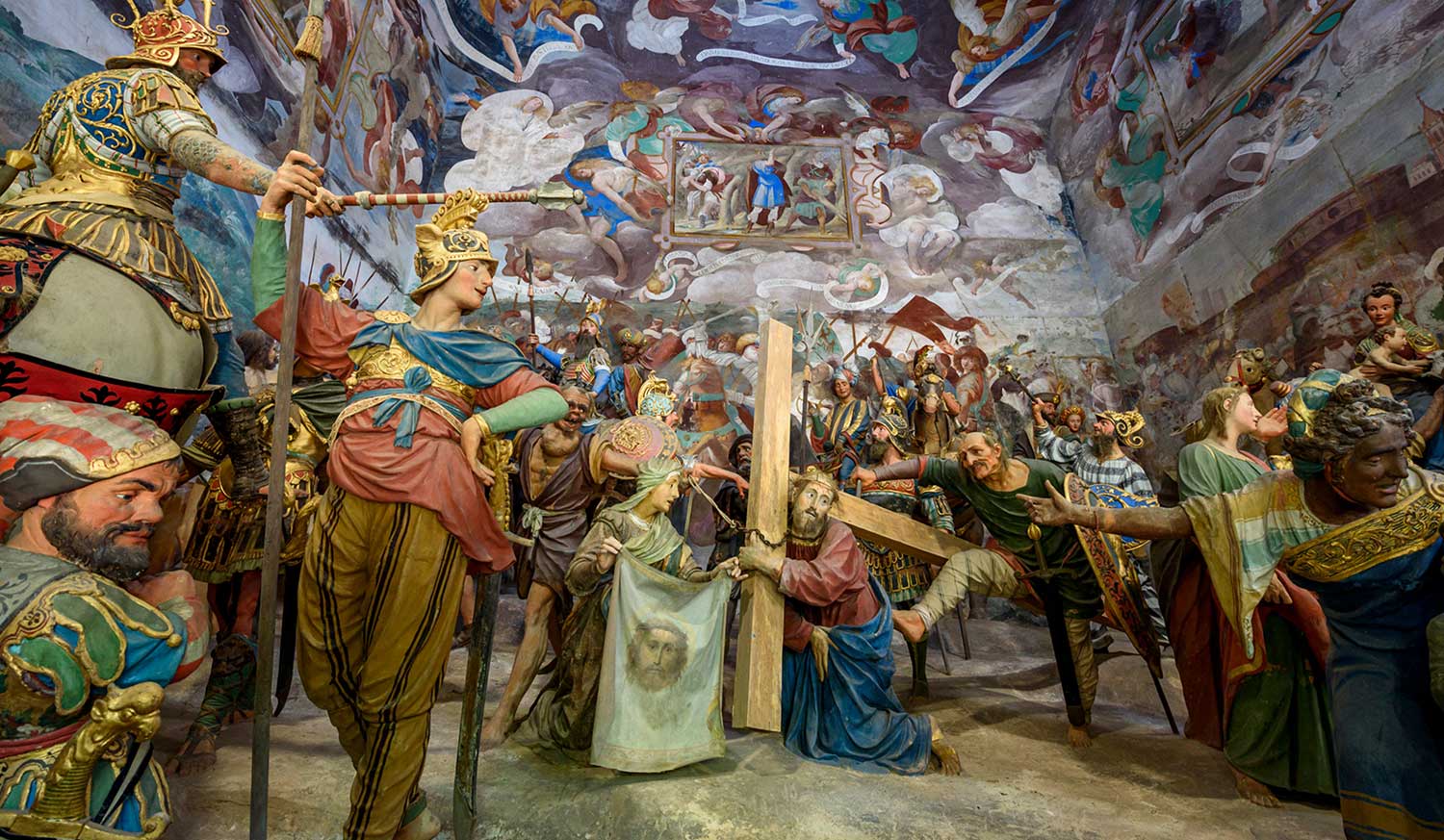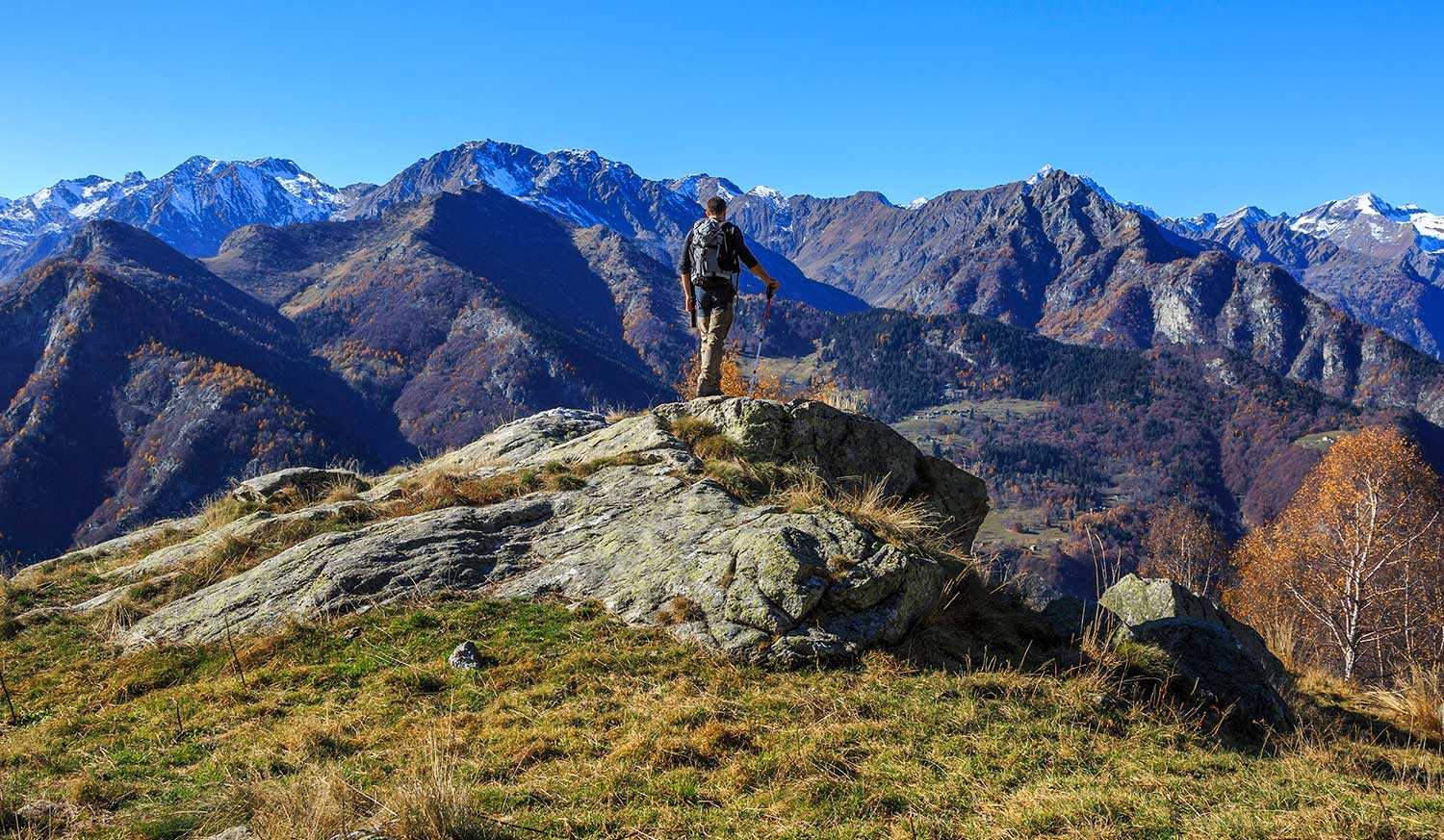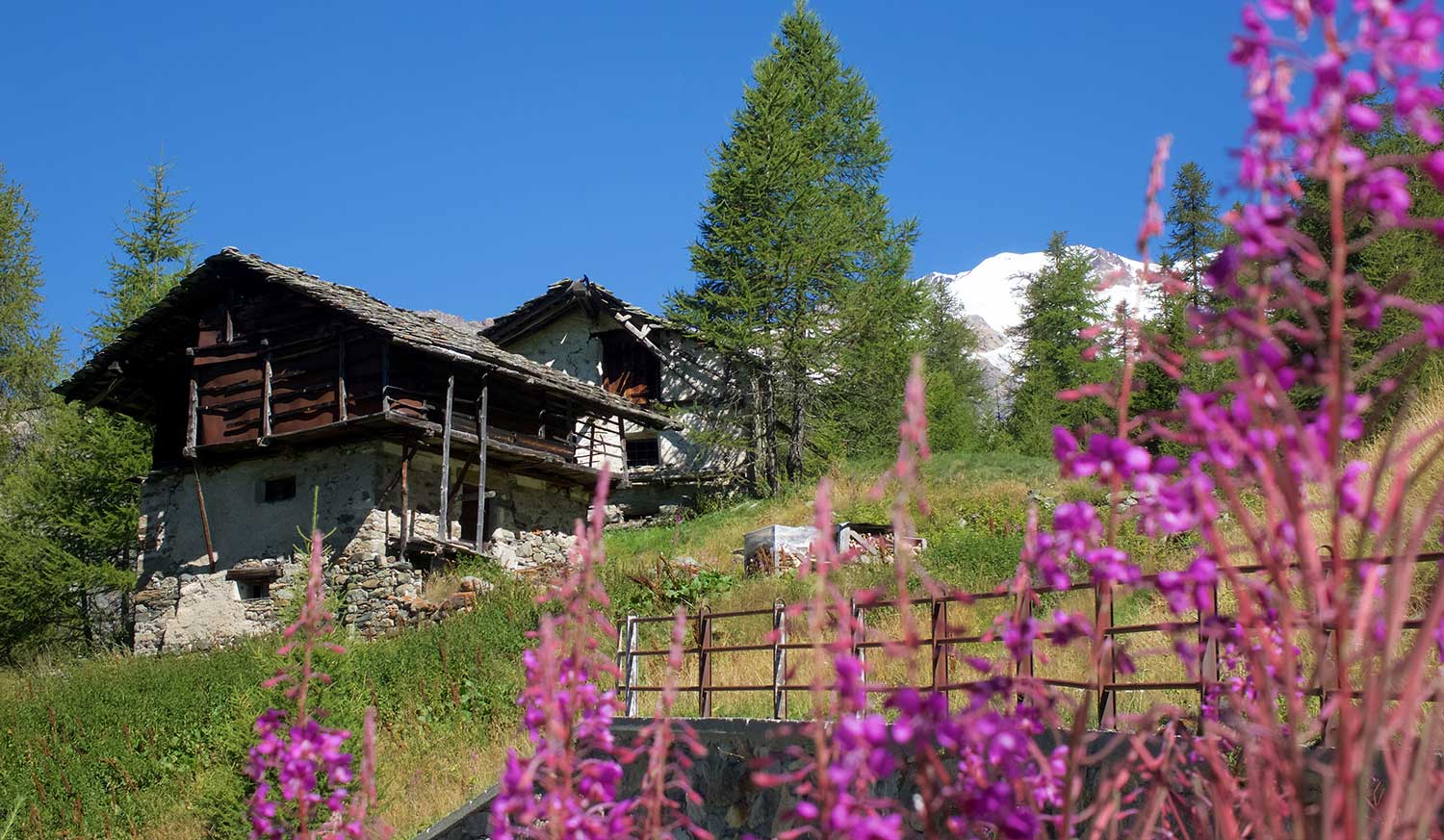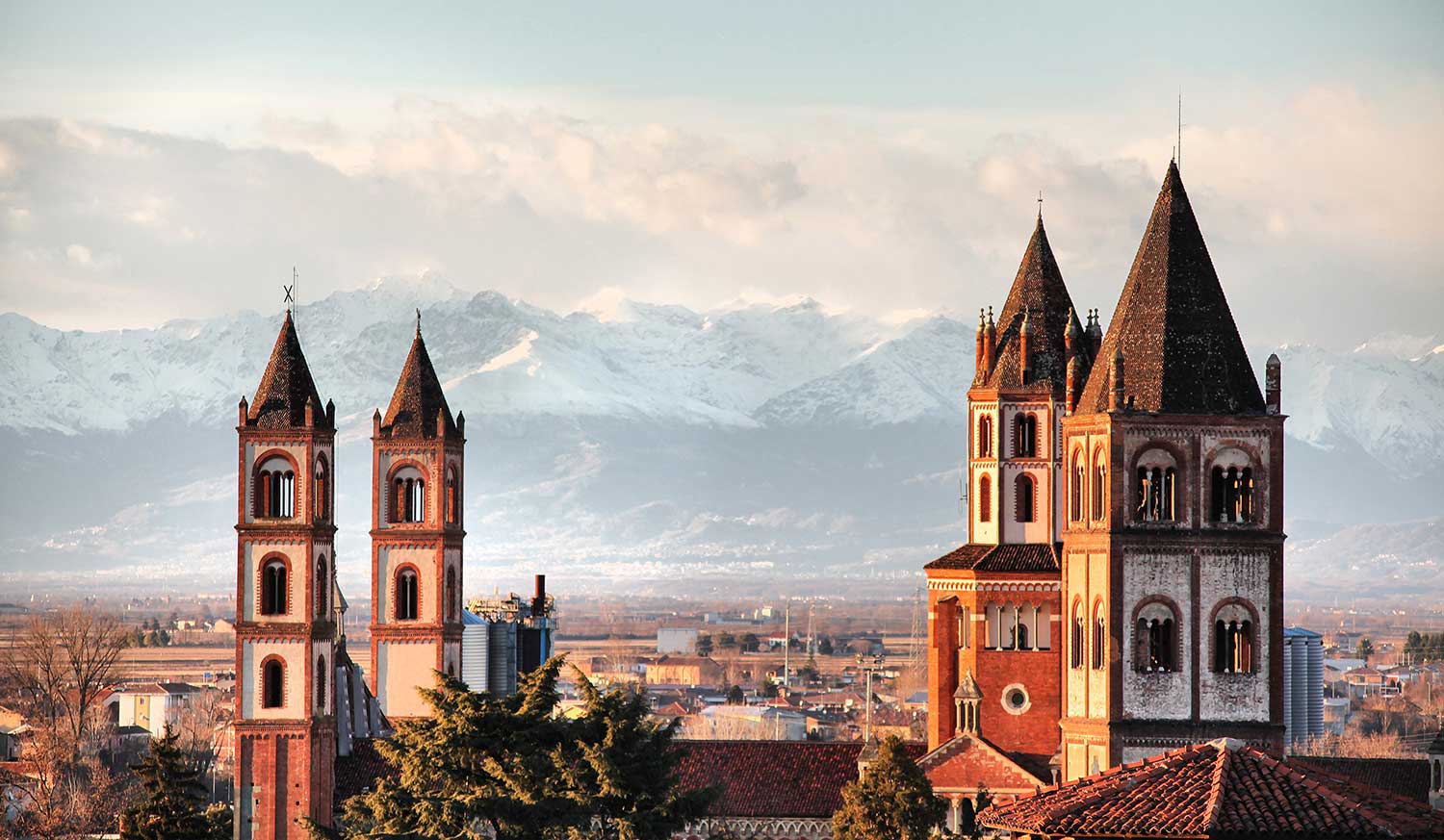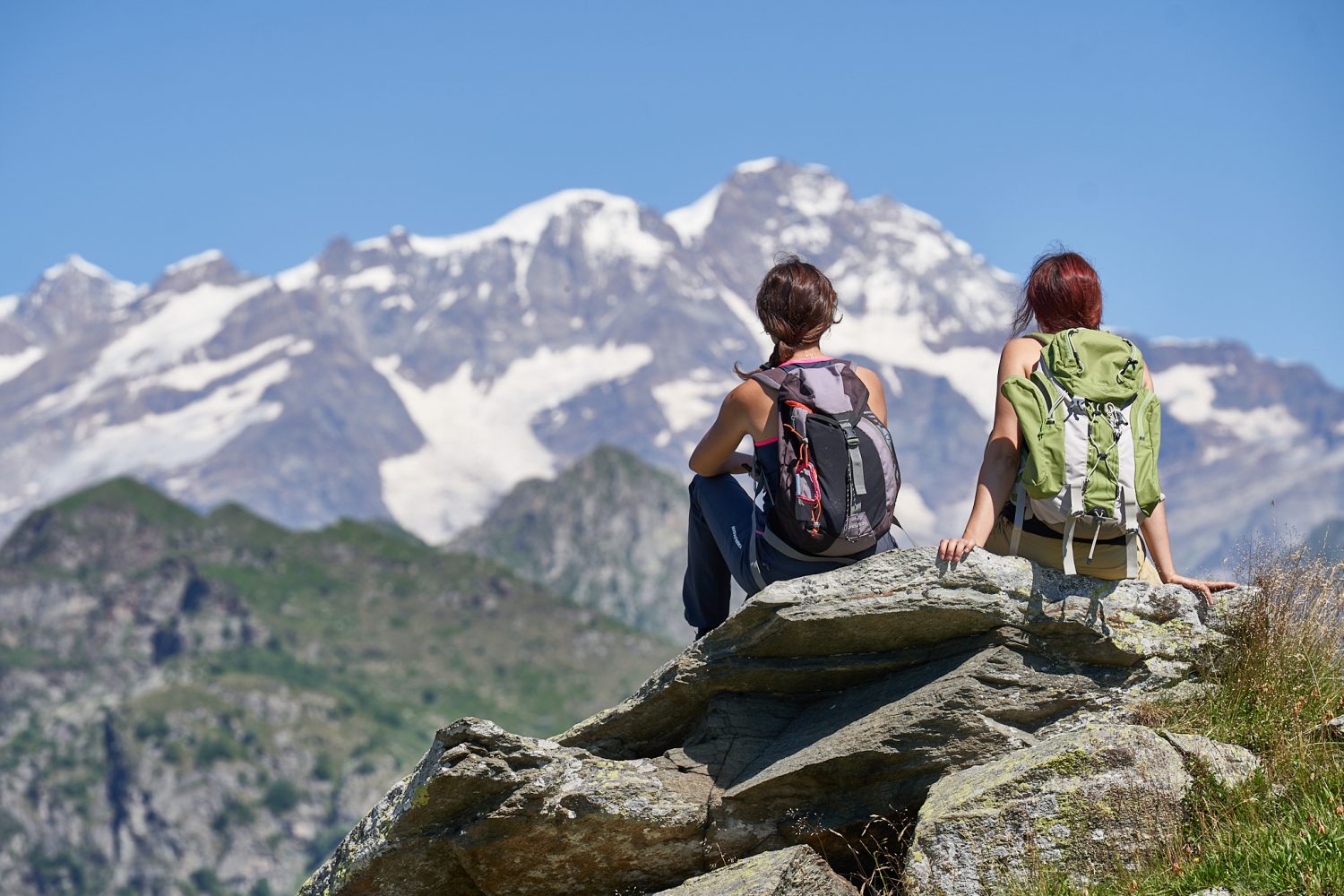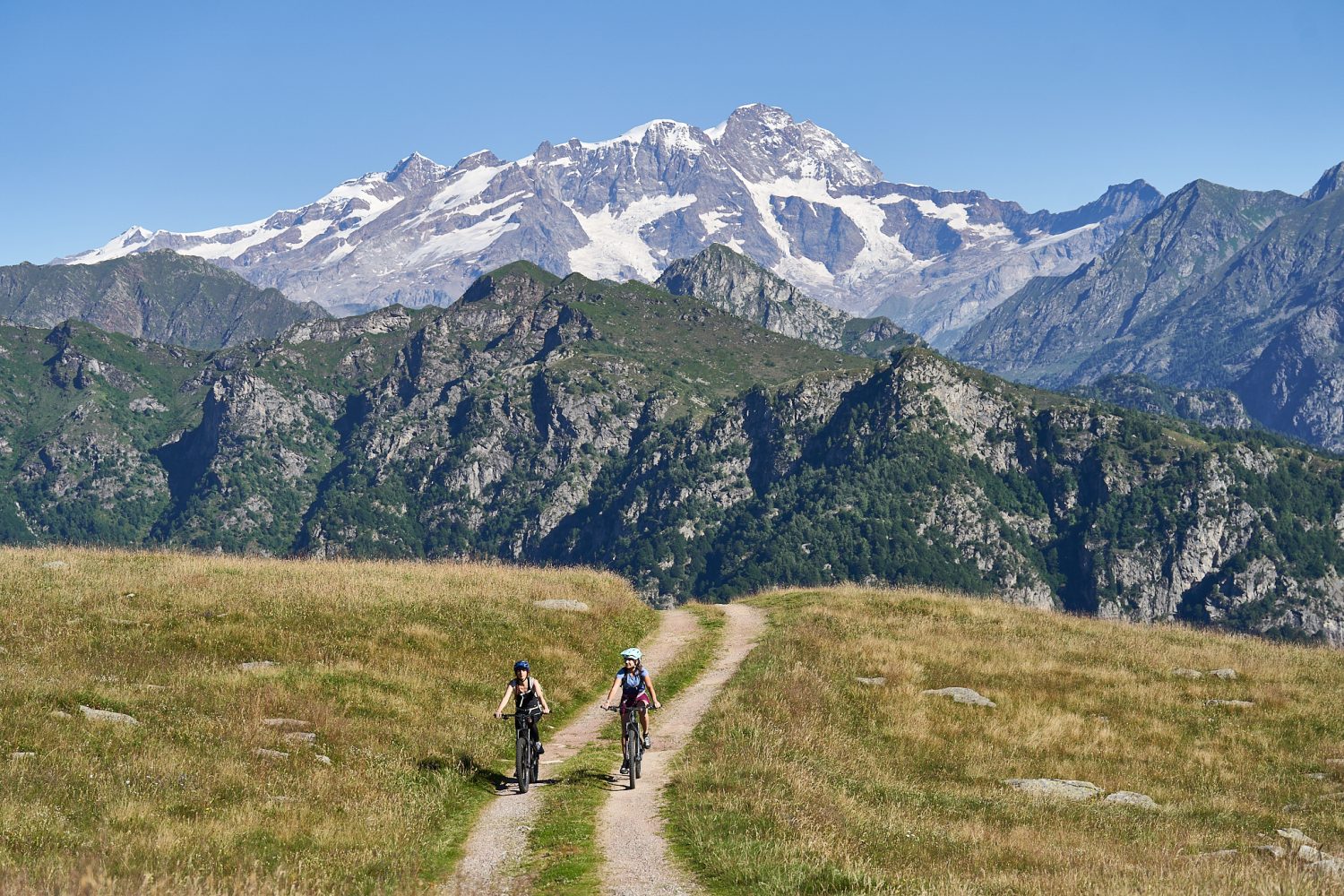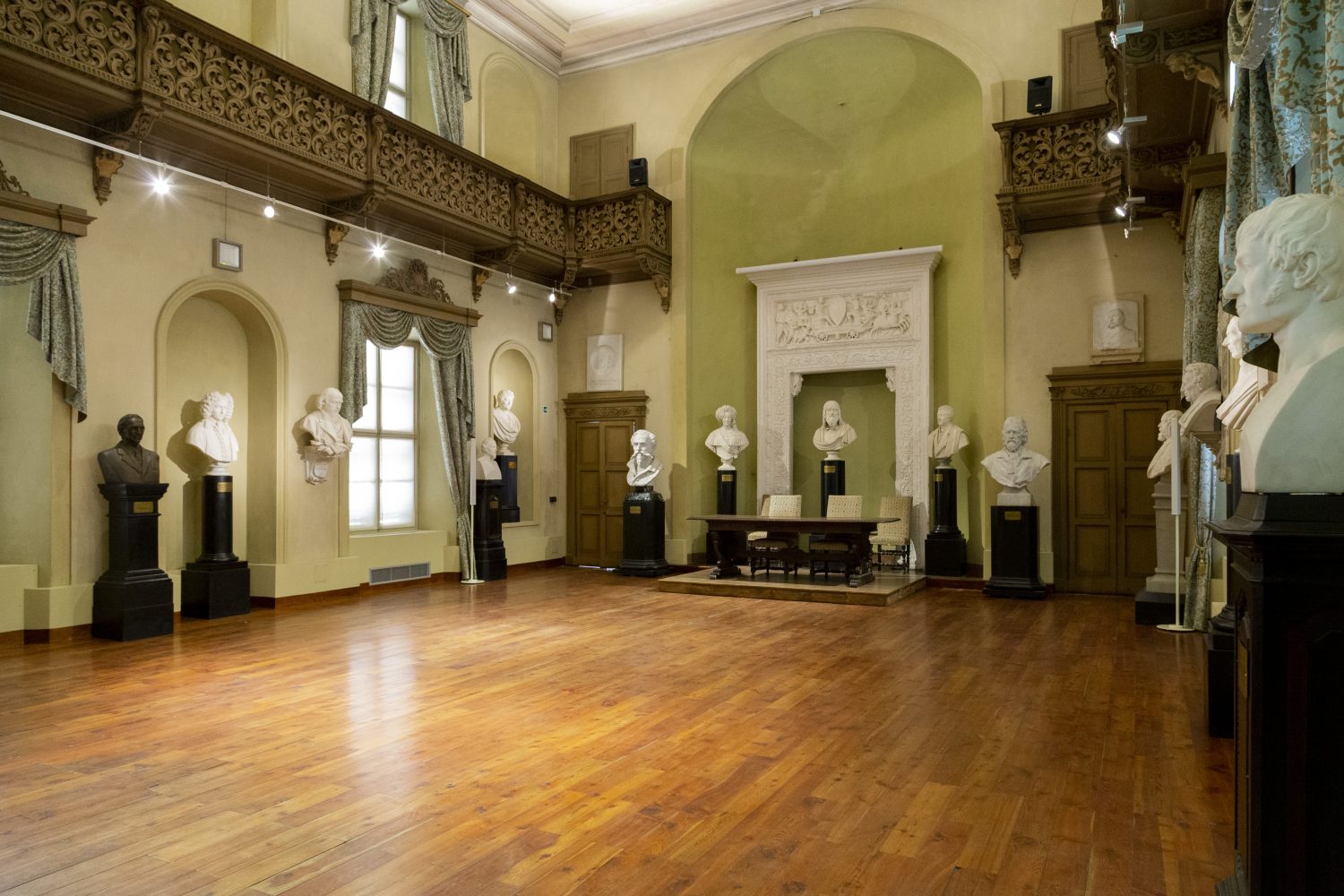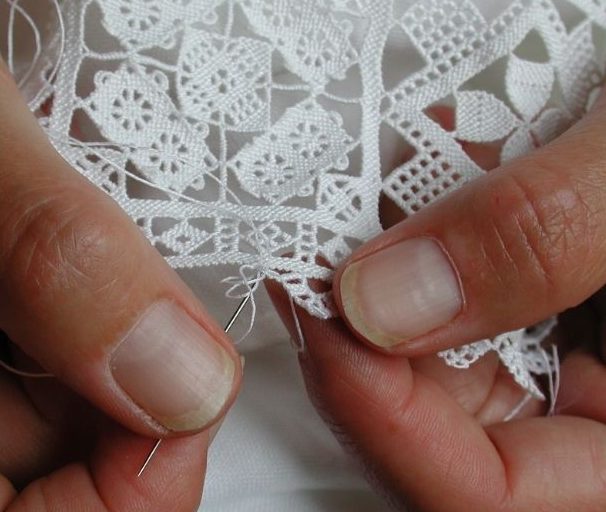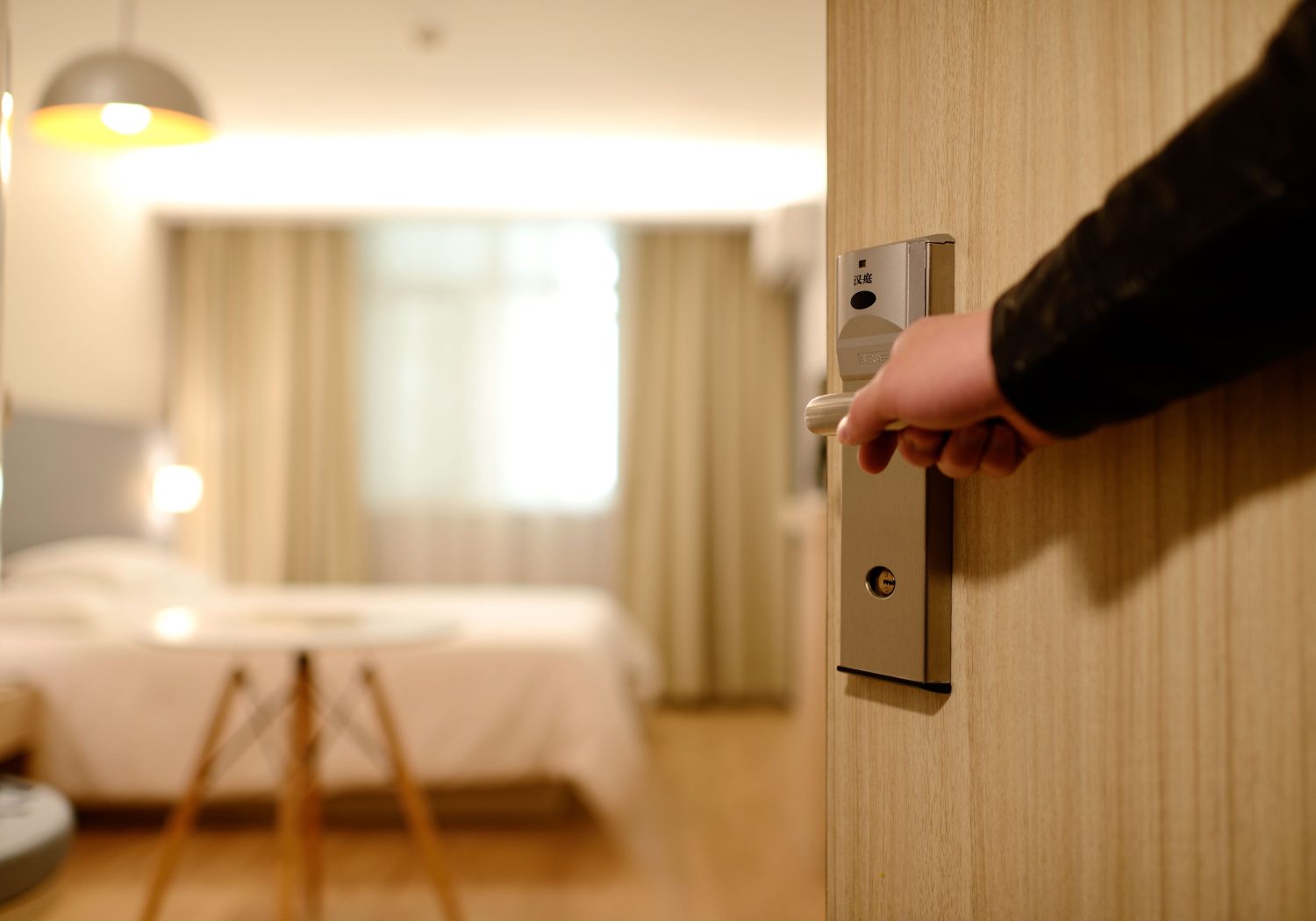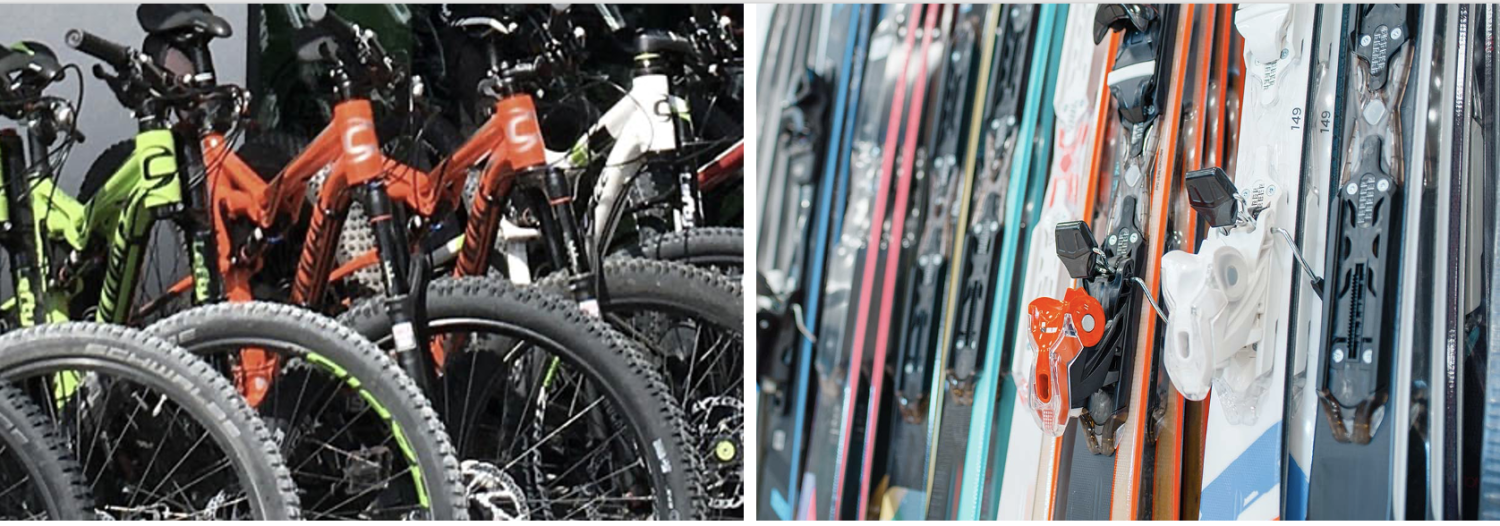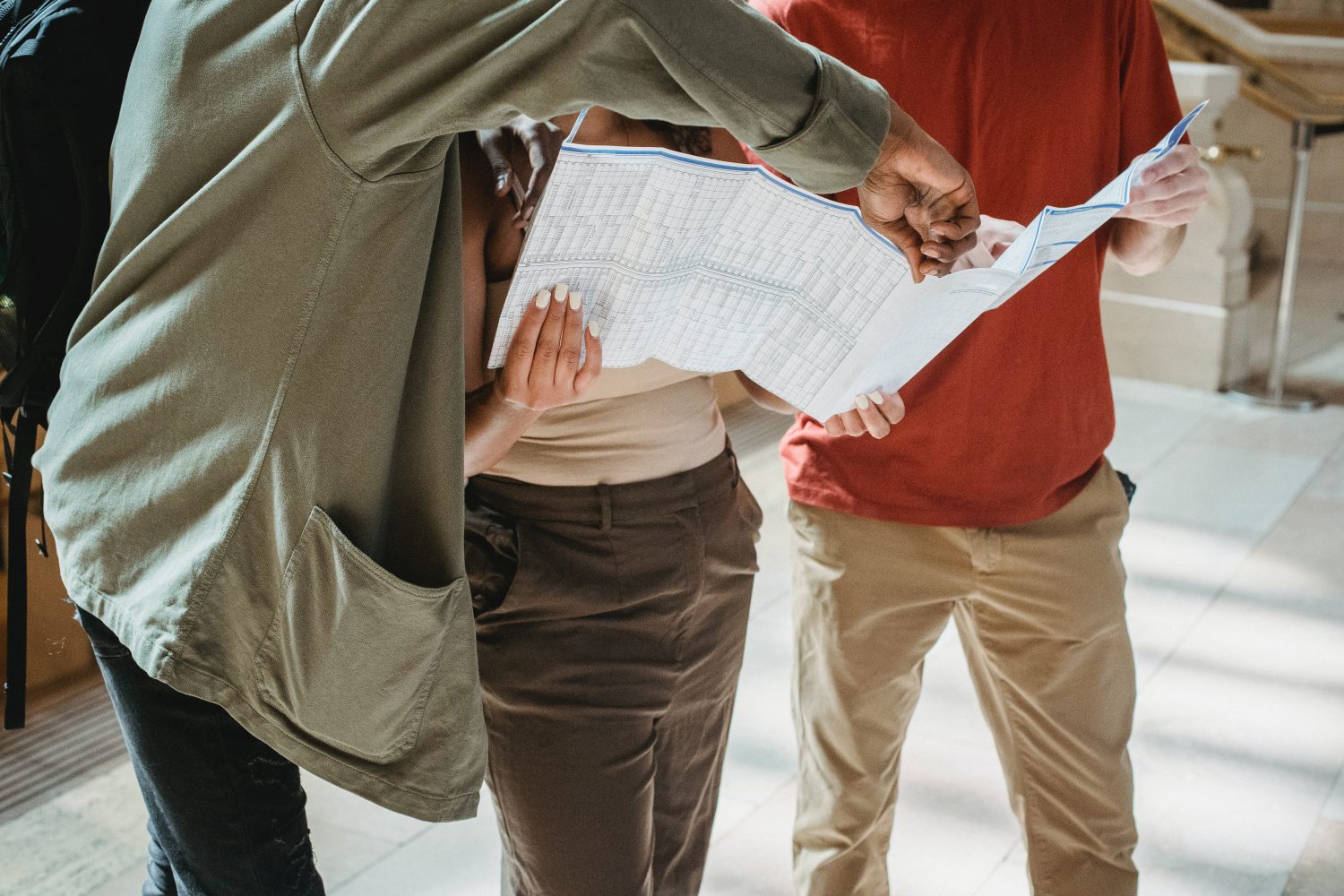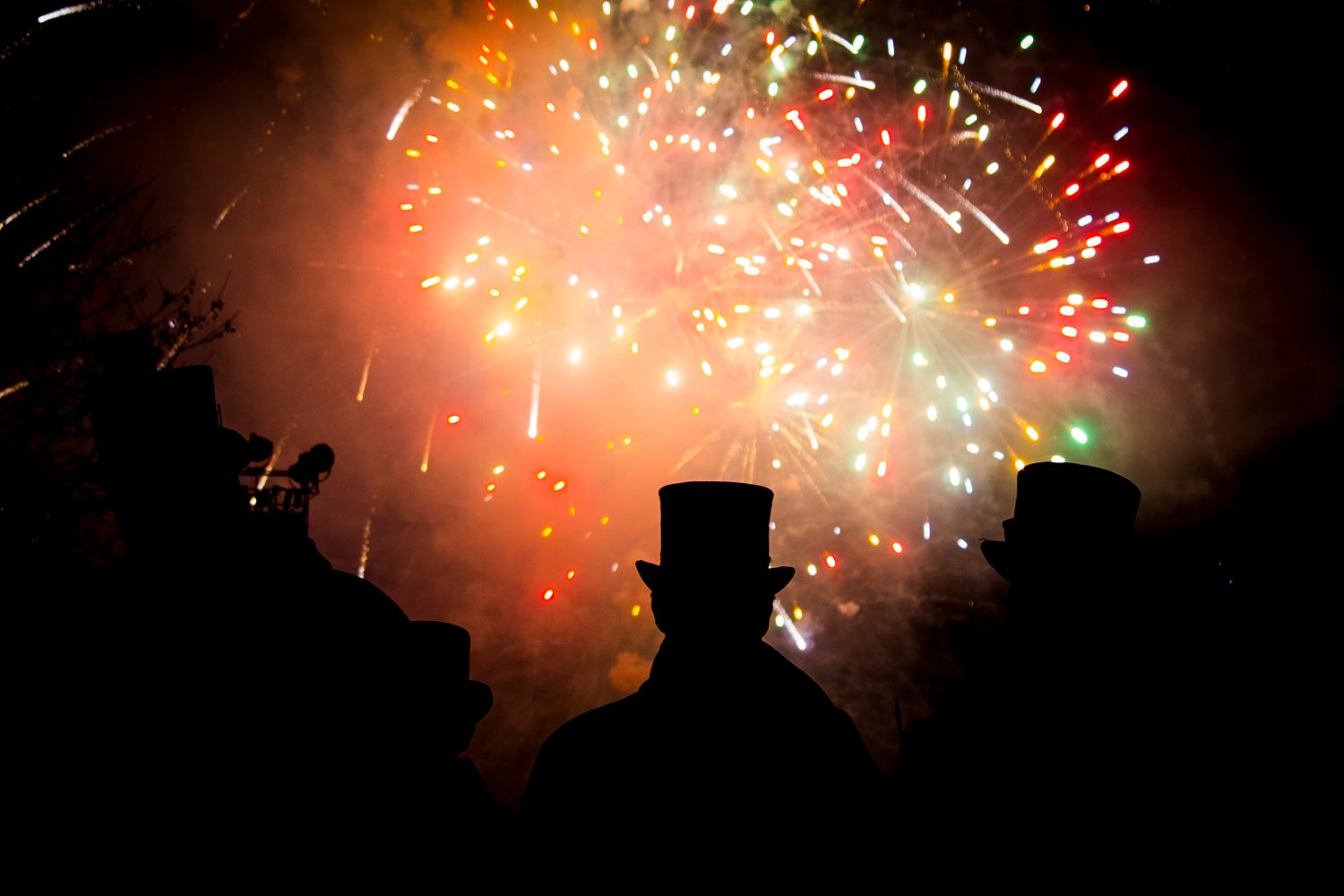
A day in Alagna
alagna the pearl of tourism in valsesia
One-day itinerary to discover Alagna Valsesia, an Alpine village on the slopes of Mount Rosa where you can discover culture and age-old traditions amidst authentic nature and breathtaking views
the twin stones
The state road connecting Vercelli to Valsesia is dotted with enchanting alpine villages and, continuing north-westwards, the very last one encountered is Alagna Valsesia.
It is said that a large stone once rolled down the mountainside. On impact with the valley floor, it split into two equal parts that stood face to face. According to tradition, these are the “twin stones”, which you see between the state road and the Sesia river, a little less than halfway between Riva Valdobbia and Alagna. They gave the name to the community that until 1475 comprised the entire territory of Riva Valdobbia and Alagna. After a long period of independence, the two municipalities united again on 1 January 2019. And the city itinerary starts precisely from the charming town of Riva Valdobbia. A word of advice: a few kilometres before entering Riva Valdobbia, don’t miss the amazing scenic view of the majestic south-east face of Mount Rosa. It certainly deserves a souvenir picture!
At the centre of this pretty village, beautifully framed by the Valsesian mountains, stands the imposing parish church of St. Michael the Archangel. The gaze is instantly drawn to the striking fresco on the façade, depicting the Last Judgement in the Nordic style. It is generally attributed to Melchiorre d’Enrico, younger brother of the better-known Tanzio da Varallo. The church is considered a national monument not only for the grandiose fresco on the façade, but also for the works of sacred art that are preserved inside, testifying to the important artistic tradition that has characterised the culture of Valsesia for centuries.
Before proceeding to Alagna, stroll through the historical alleyways of Riva Valdobbia and turn your gaze towards the snow-capped peaks of the Alps: it will be an unforgettable experience!
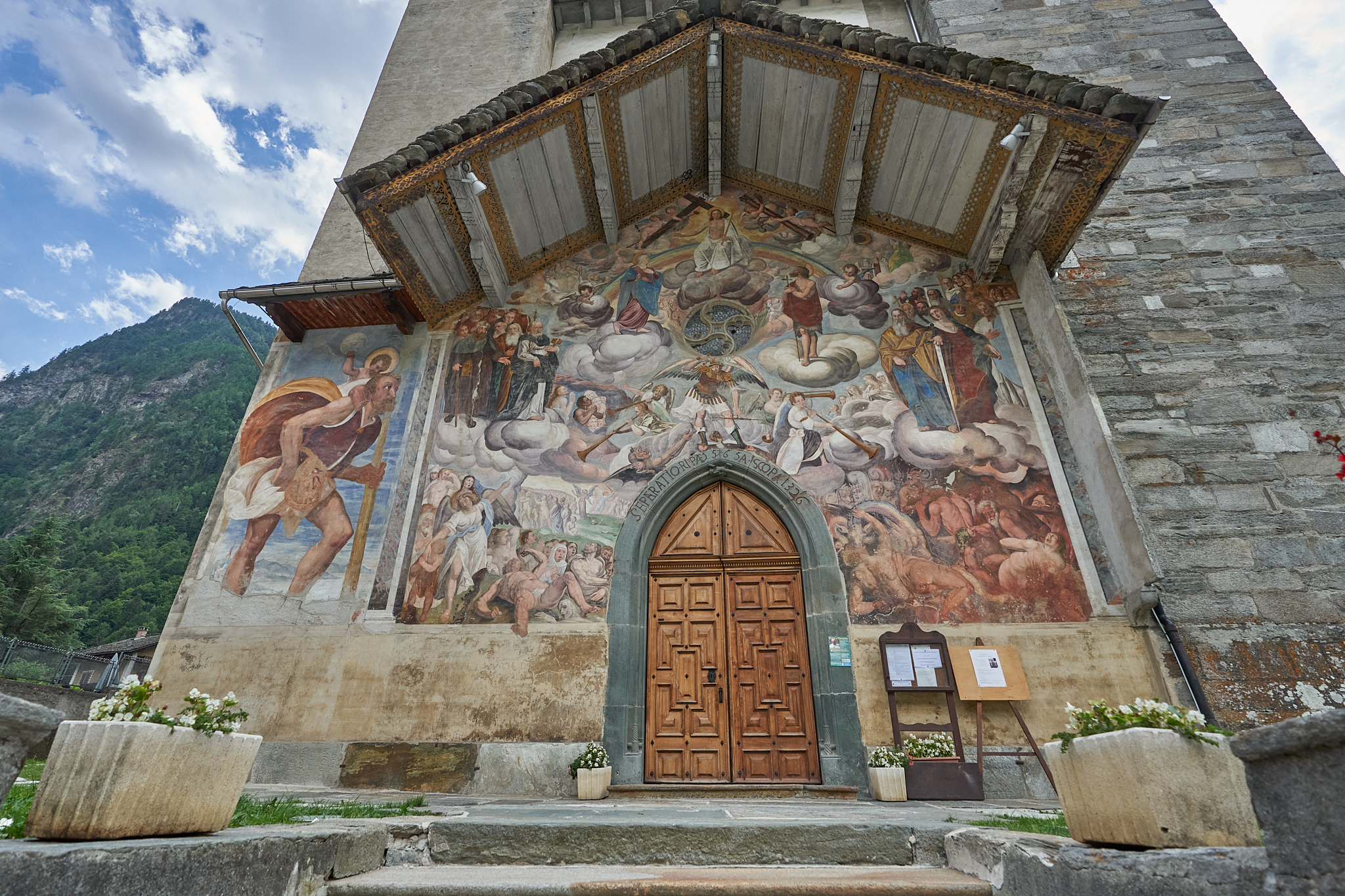
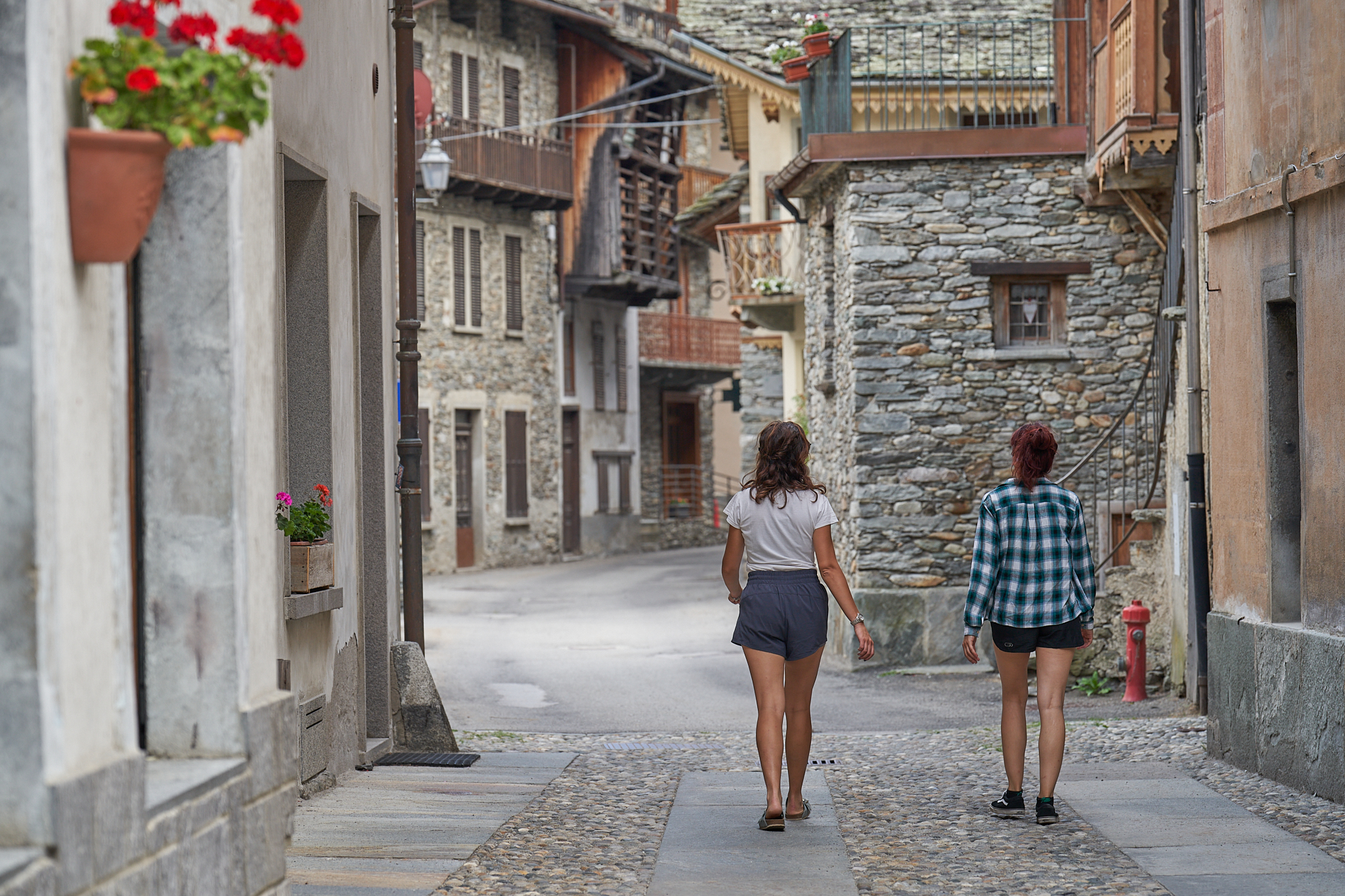
in the footsteps of the Walser population
Alagna Valsesia is an enchanting village. Walking through the ancient streets of the historic city centre to discover the history of this place offers timeless feelings. Walking along the central via dei Walser, you breathe in an atmosphere that smells of ancient traditions. The small, picturesque hamlet is dotted with the typical dwellings of the Walser people, houses built of wood and stone that make Alagna a genuine historical and cultural gem.
Not far away, the Parish Church of St. John the Baptist dominates the village square, and its bell tower soars over the surrounding alpine landscape.
The itinerary continues to the hamlets of the village, which are rich in historical testimonies of great value. Indeed, there are two museums that can be visited, dedicated to Walser culture: one is located in the hamlet of Pedemonte and the other in the hamlet of Rabernardo.
The Walser Museum in Pedemonte and the Walser Museum in Rabernardo are two wonderful places to learn about the simple and genuine life of the valley people, on a journey out of time. The museums, set up in genuine Walser dwellings restored to their original characteristics, preserve objects of everyday life and faithfully reproduce the rooms that were once used as part of the domestic life of the Walser people.
Strolling through the hamlets of Alagna always offers unique views, such as flower-filled balconies, stone fountains, bread ovens, sawmills and mills, an impressive historical heritage that can be experienced in the midst of a unique view of Mount Rosa.
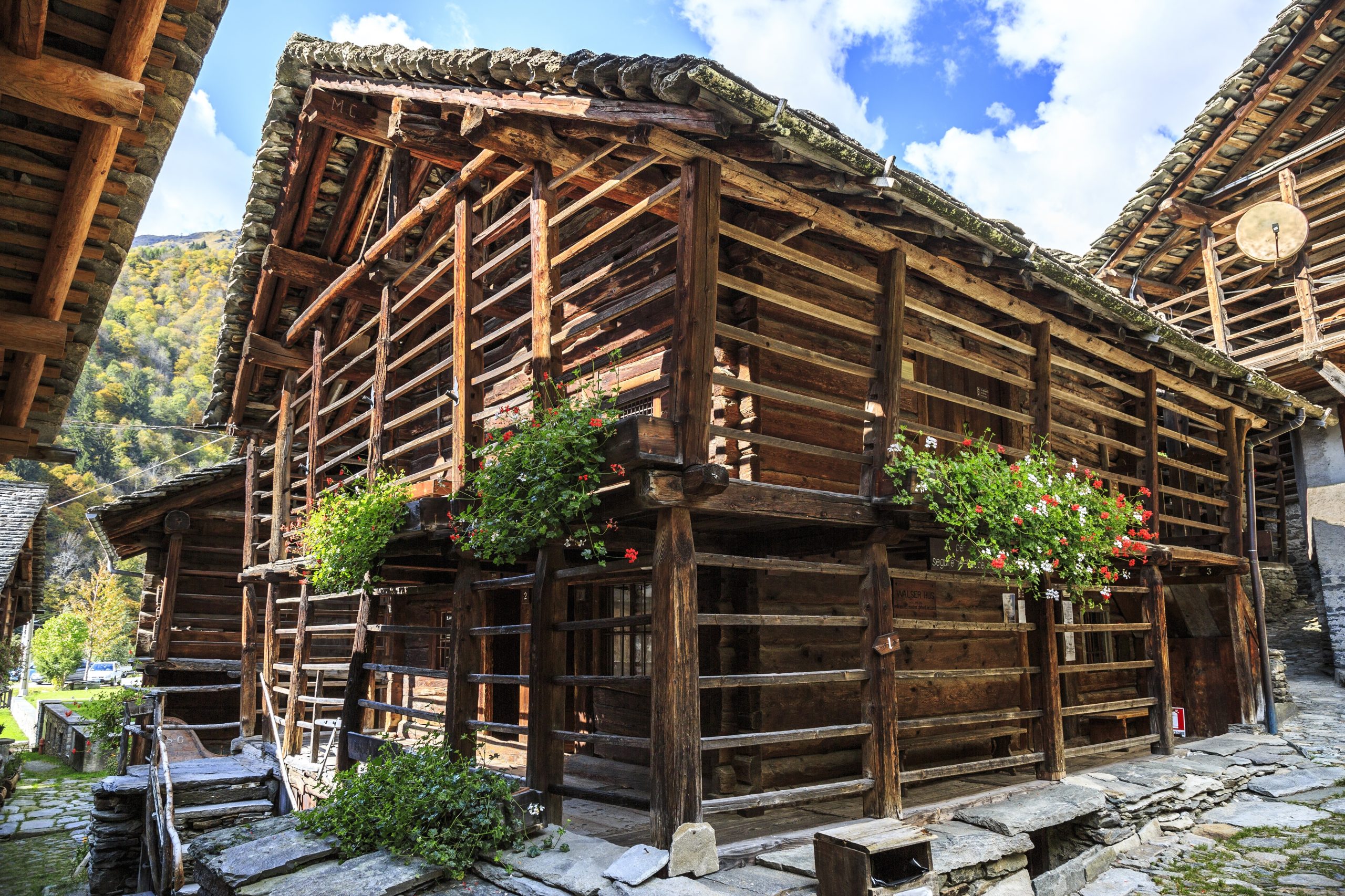

sports and outdoor activities
Unspoilt nature, evocative landscapes that take your breath away, pleasant valleys furrowed by crystal-clear streams in a silence that is at times almost unreal; places that retain the traits of art, architecture and local tradition. It is in this unique environment that Alagna Valsesia welcomes visitors.
Alagna is also and above all the byword for sports and outdoor activities, a true paradise for those who love active outdoor holidays. The area offers many trekking and MTB itineraries for all levels, winding through forests, historic villages, mountain lakes and alpine pastures close to the majestic Mount Rosa massif. And then again paragliding, river sports, climbing and several via ferrata: discover all the summer sports to practice in Alagna and the surrounding area!
In winter, Alagna Valsesia and the Monterosa Ski area offer ski and freeride enthusiasts countless adrenaline-filled slopes with varying degrees of difficulty where fun is guaranteed. Alagna rises at an altitude of 1,200 m and is known throughout the world as the Freeride Paradise. Here, the skilled skier can embark on thrilling descents on untouched snow in a breathtaking setting.
A day of sports and exercise is sure to work up an appetite, and while sometimes a miaccia, a typical crispy wafer to be stuffed sweet or savoury, is enough to appease the hunger, at other times a tasty polenta concia or a delicious plate of risotto alla toma cheese is much needed. Alagna guarantees a memorable food and wine experience!
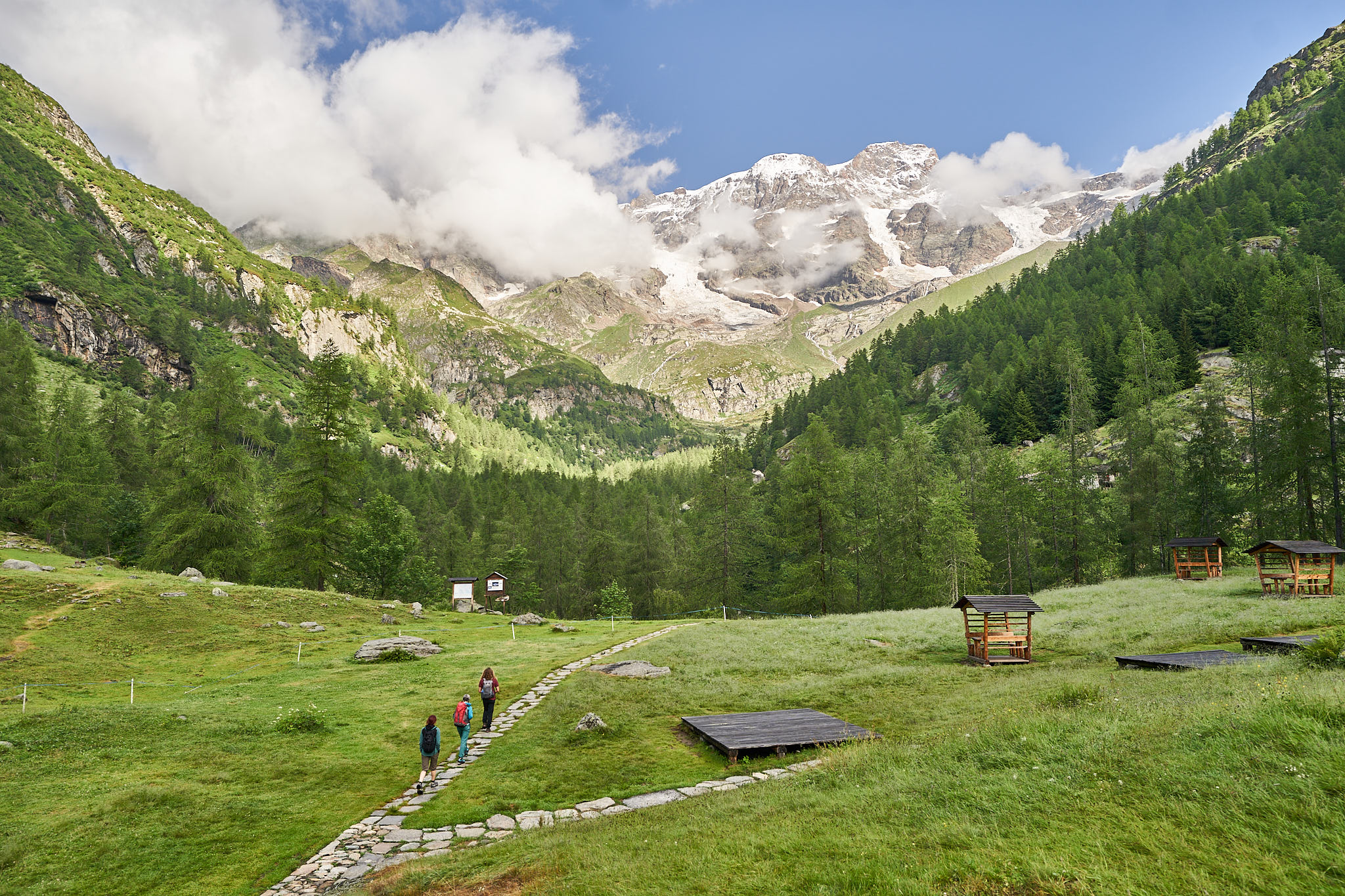
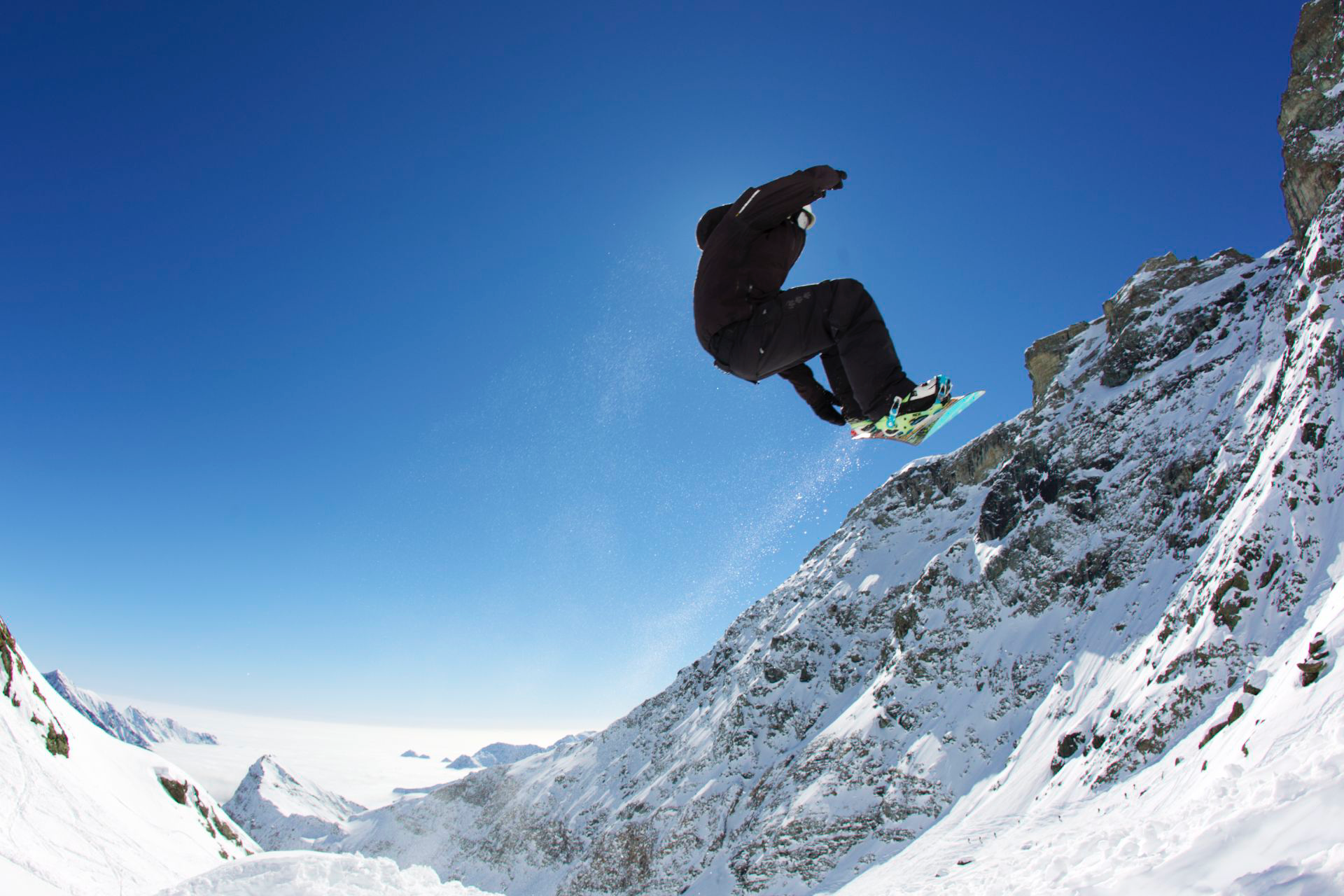
Chiesa di San Michele
Chiesa di San Giovanni Battista
Pedemonte
Rabernardo
Rifugio Pastore
Rifugio Barbaferrero
How to get to ALAGNA
BY HIGHWAY
From Milan: A4 Milan-Turin exit Agognate or junction A26 at Biandrate, direction Gravellona Toce to Romagnano-Ghemme.
From Turin: exit Greggio or junction A26 at Biandrate, direction Gravellona Toce to Romagnano-Ghemme.
From Vercelli: A26 Genova-Gravellona Toce, exit Romagnano-Ghemme. From Romagnano Sesia follow SP 299 to Varallo-Alagna Valsesia.
BY BUS
A daily bus service connects Varallo to Milano, Torino, Vercelli, Novara. Discover how to get to Varallo and Alagna.
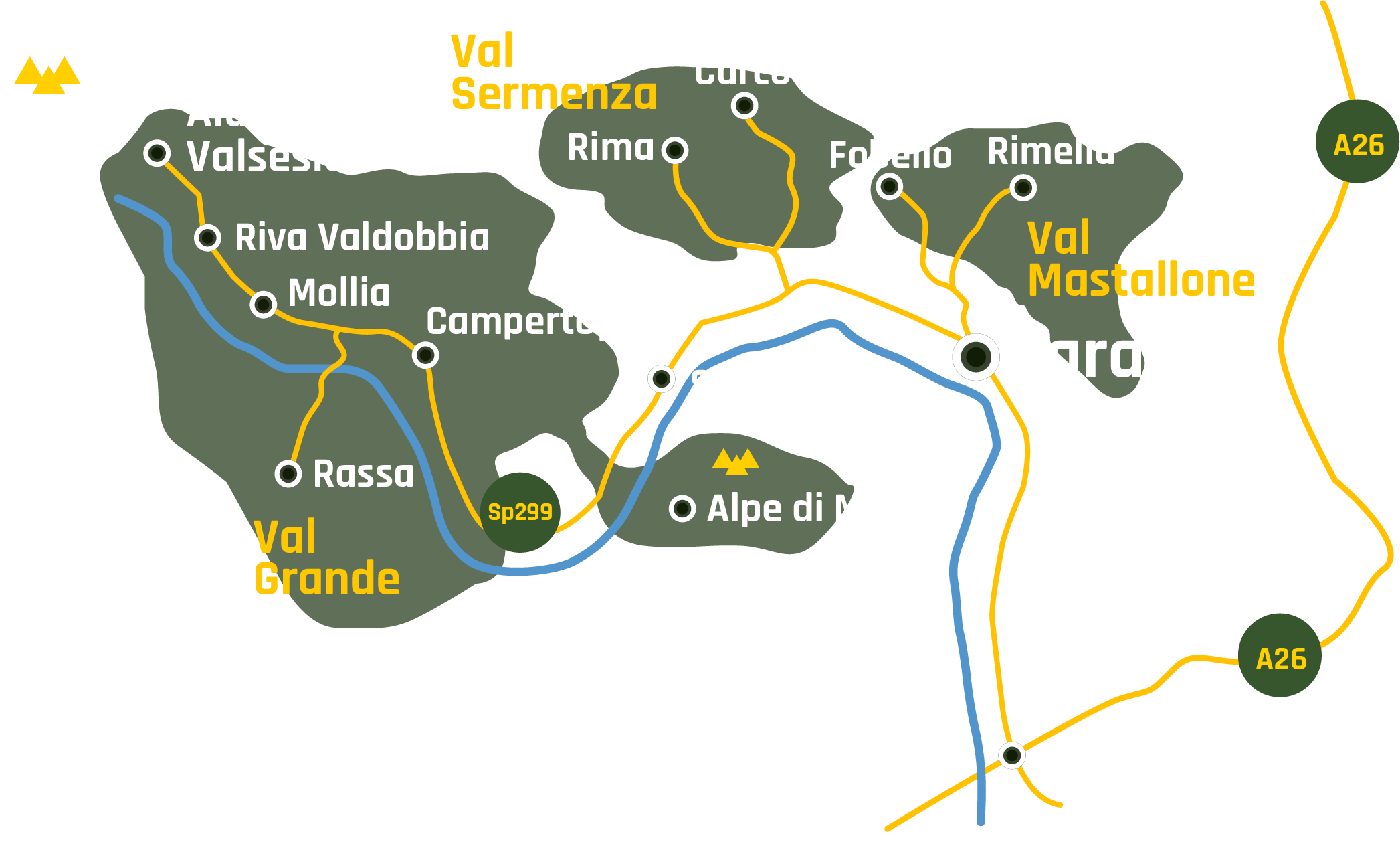
Plan your holiday
Where to eat, where to sleep, how to get around: plan your trip to Valsesia and Vercelli!
Richiedi
informazioni
su questo
itinerario
Compila il form per saperne di più su questo itinerario
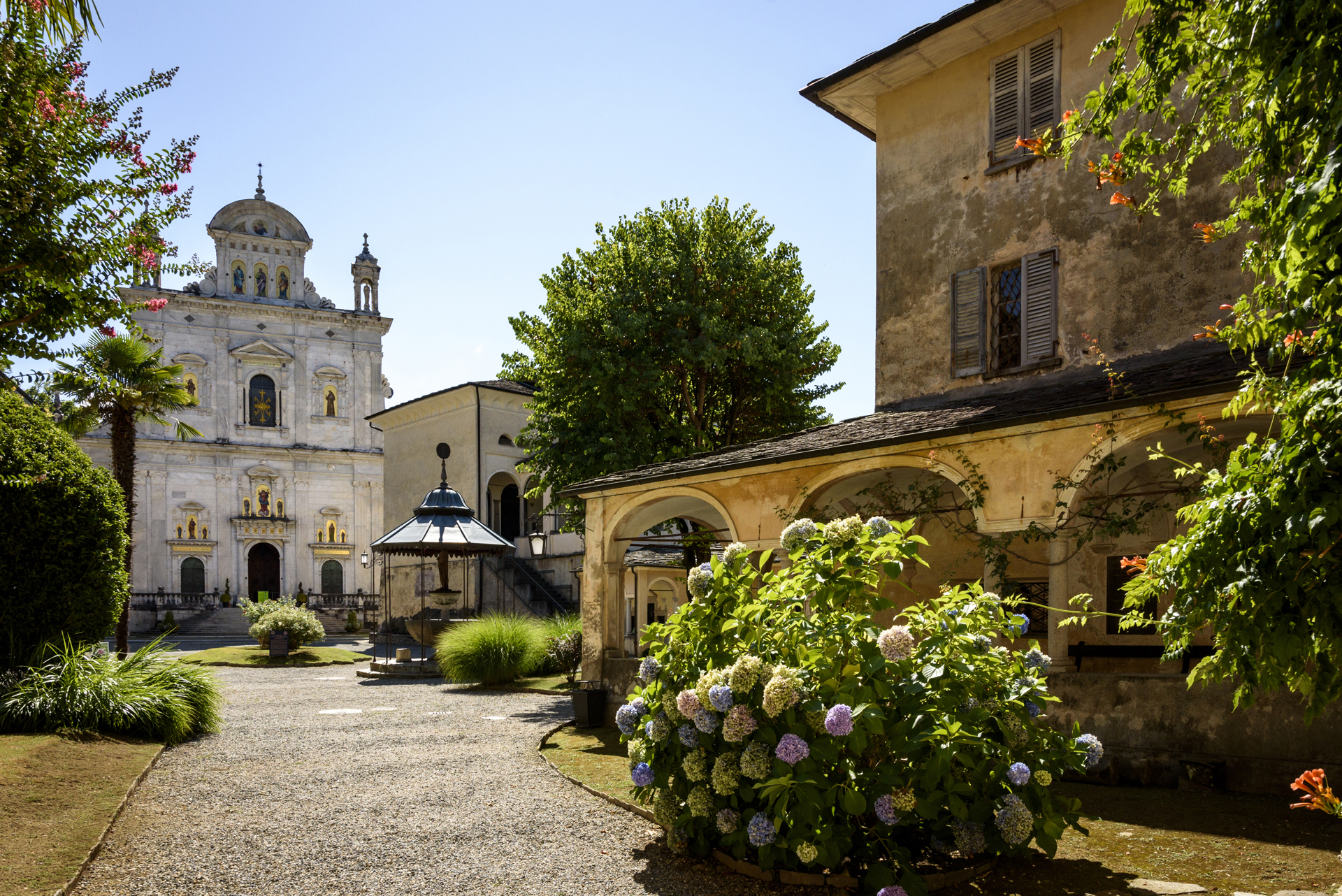
A day in Varallo
Varallo HISTORICAL AND CULTURAL CAPITAL OF VALSESIA
A one-day itinerary to discover Varallo, a historic town packed with art and history, and one of the most precious gems of Valsesia
AVENUE, HISTORICAL VILLAS AND COLLEGIATE CHURCH OF ST. GAUDENTIUS
Start from the Corso Roma avenue, home to majestic 19th century villas, which now house organisations and associations: Villa Virginia with its characteristic tower and walls adorned with Rima’s artificial marble; Villa Barbara with its somewhat Moorish motifs; and Villa Durio, its interior decorated with stucco and frescoes. Almost at the end of the tree-lined avenue, on the left, the former Ursuline Convent leads into Piazza Vittorio Emanuele II.
Your gaze is instantly captured by the Collegiate Church of St. Gaudentius, which towers above the town. Built on a rocky promontory, it can be reached by an impressive flight of steps leading to the splendid loggia from which you can admire the square below with the Civic Theatre on one side and, raising your eyes to the sky, the Sacro Monte of Varallo on the other.
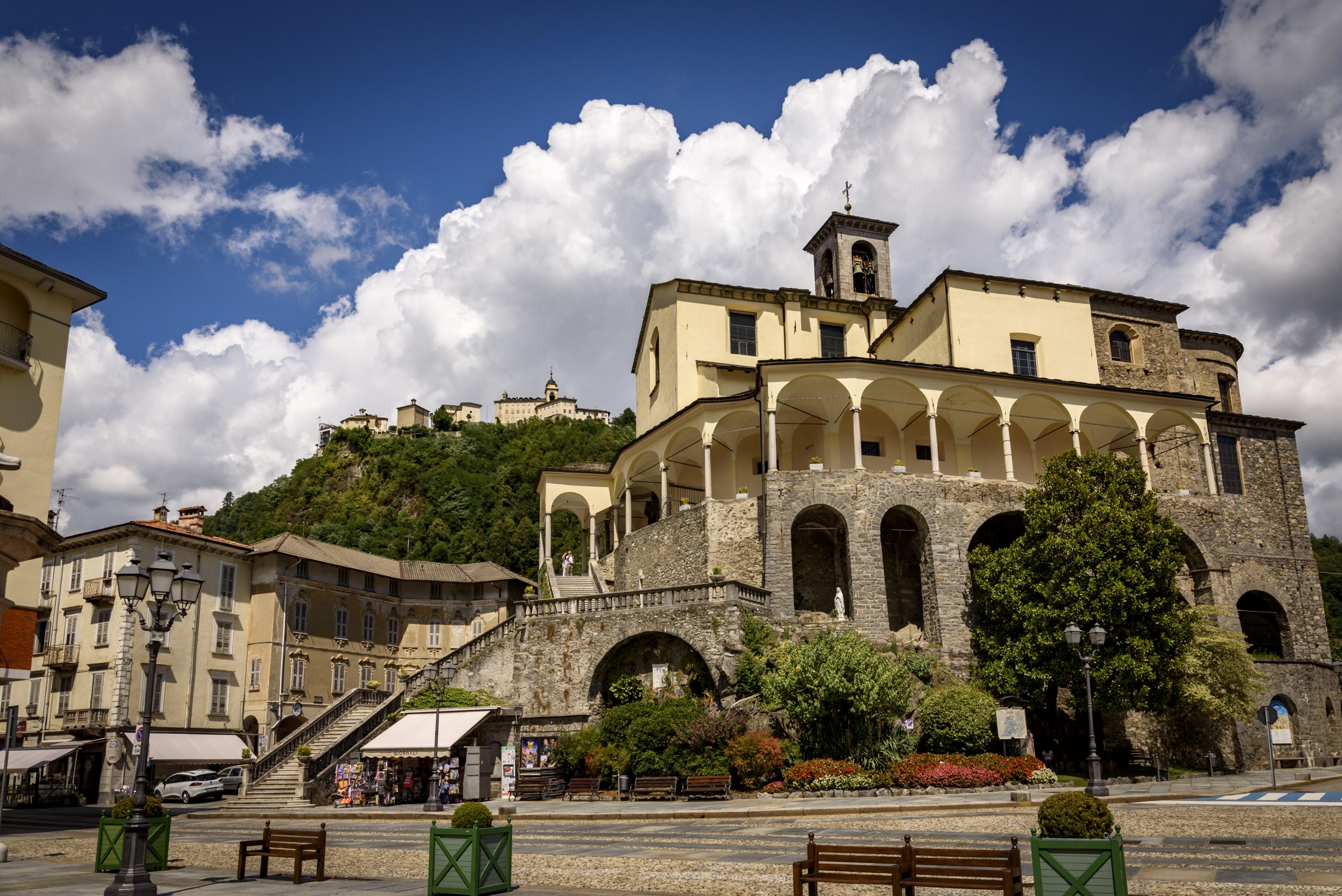
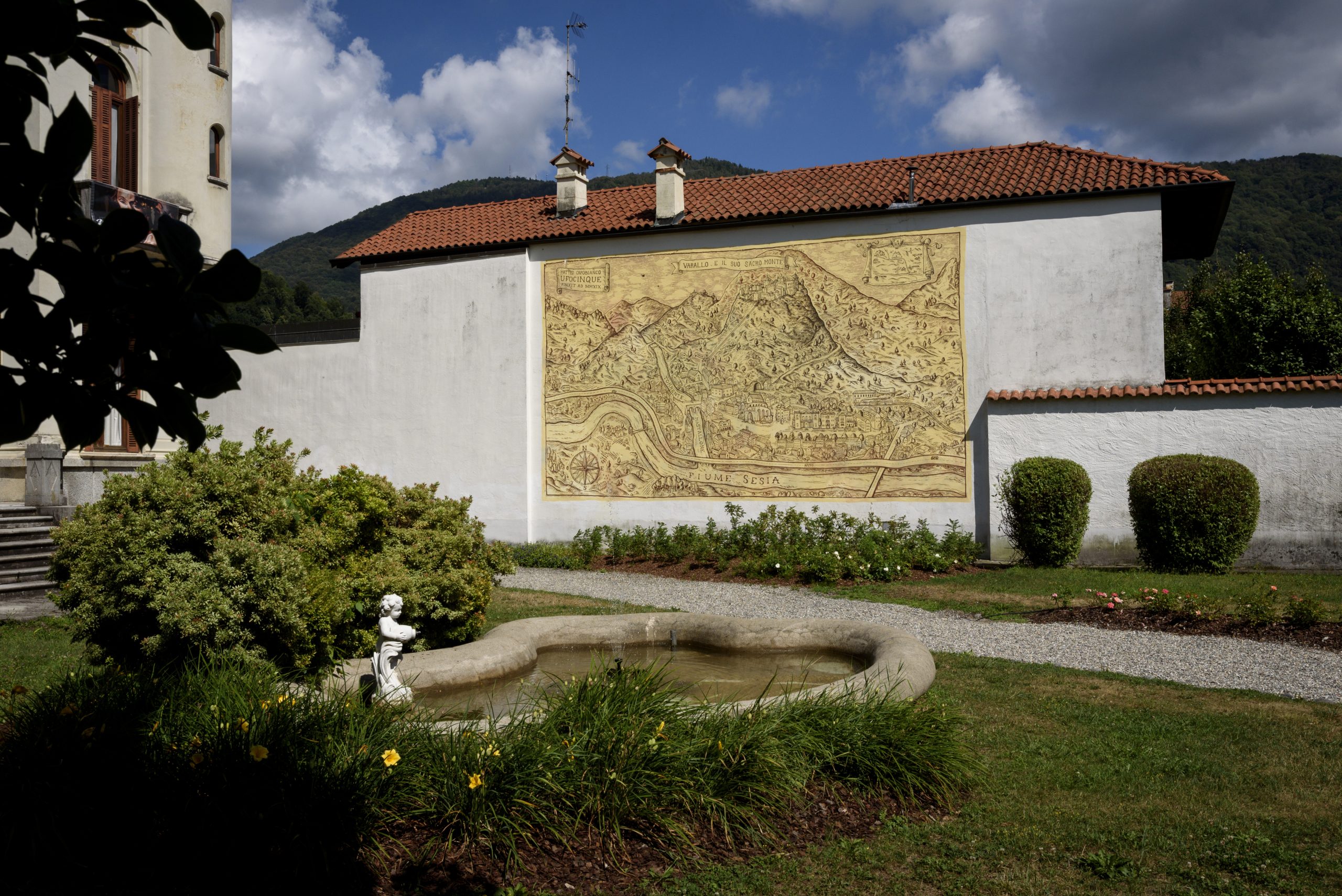
MUSEUM PALACE, SANTA MARIA DELLE GRAZIE AND THE CABLE CAR
Continuing along Via Umberto I and turning towards Via Don Maio, the ancient Contrada dei Nobili, you get to Via Calderini, where “Palazzo dei Musei” is located. It is home to the Varallo Picture Gallery, which recounts the artistic tradition of the territory developed over the centuries by the prestigious Sacro Monte building site, and the Pietro Calderini Natural History Museum, which exhibits naturalistic and archaeological collections, with the Egyptian one standing out.
At the end of the street you reach Ferrari Square where you can admire the Church of Santa Maria delle Grazie. Commissioned by Bernardino Caimi (who created the Sacro Monte in Varallo), it combines Franciscan simplicity with Gothic architecture, with large arches supporting the ceiling of exposed wooden beams. And it is here that the gaze lingers on the so-called “Gaudentian Wall”, one of the most important testimonies of the Renaissance in Piedmont, with 21 figures frescoed by Gaudenzio Ferrari in 1513 on the partition wall separating the space open to the faithful from the space formerly reserved for the religious.
As you leave the church, on the left, don’t miss the opportunity to ride the steepest cable car in Europe, which takes you to Sacro Monte in 90 seconds. The more athletic can try the pedestrian alternative, a 20-minute climb.
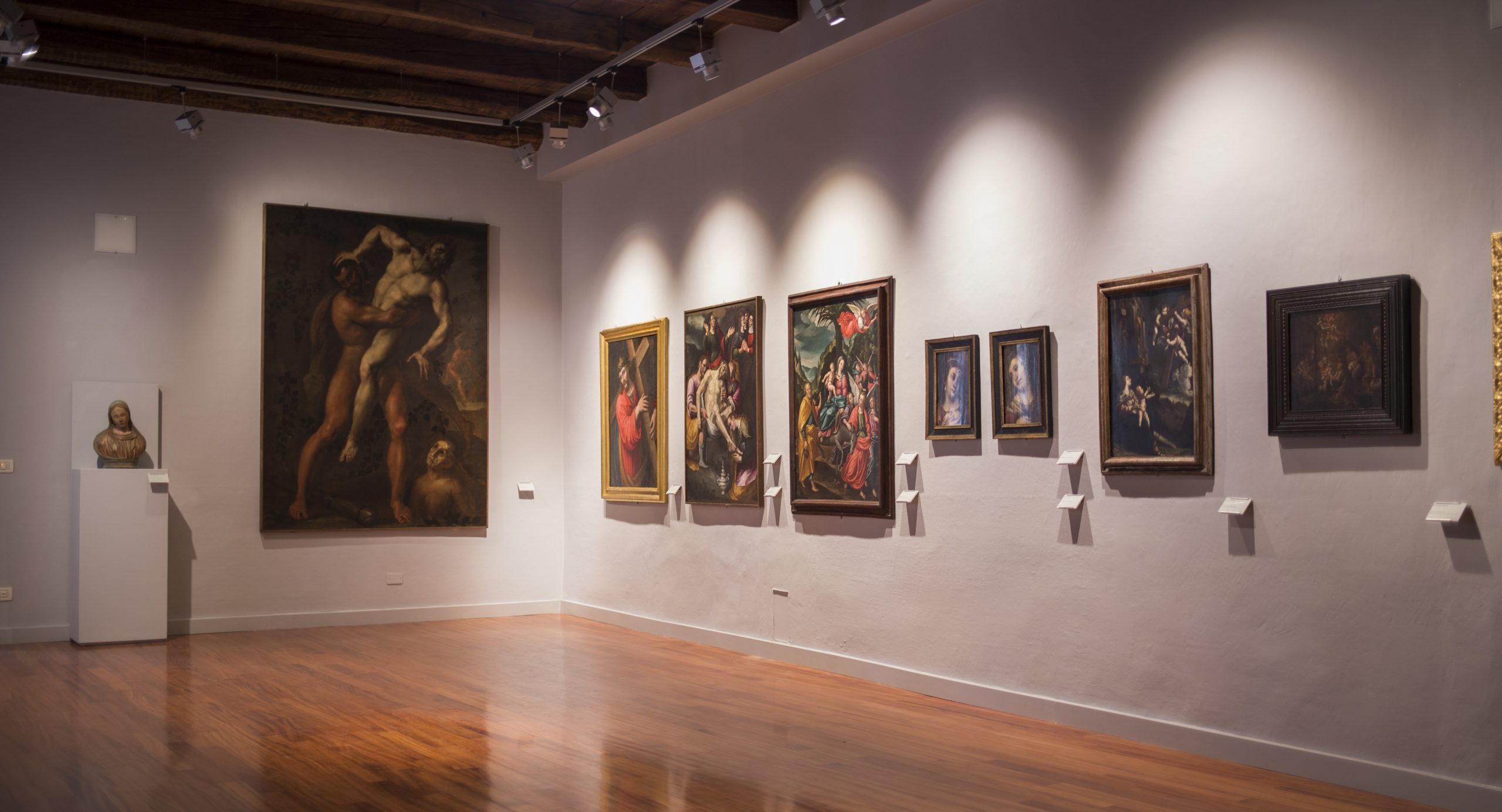
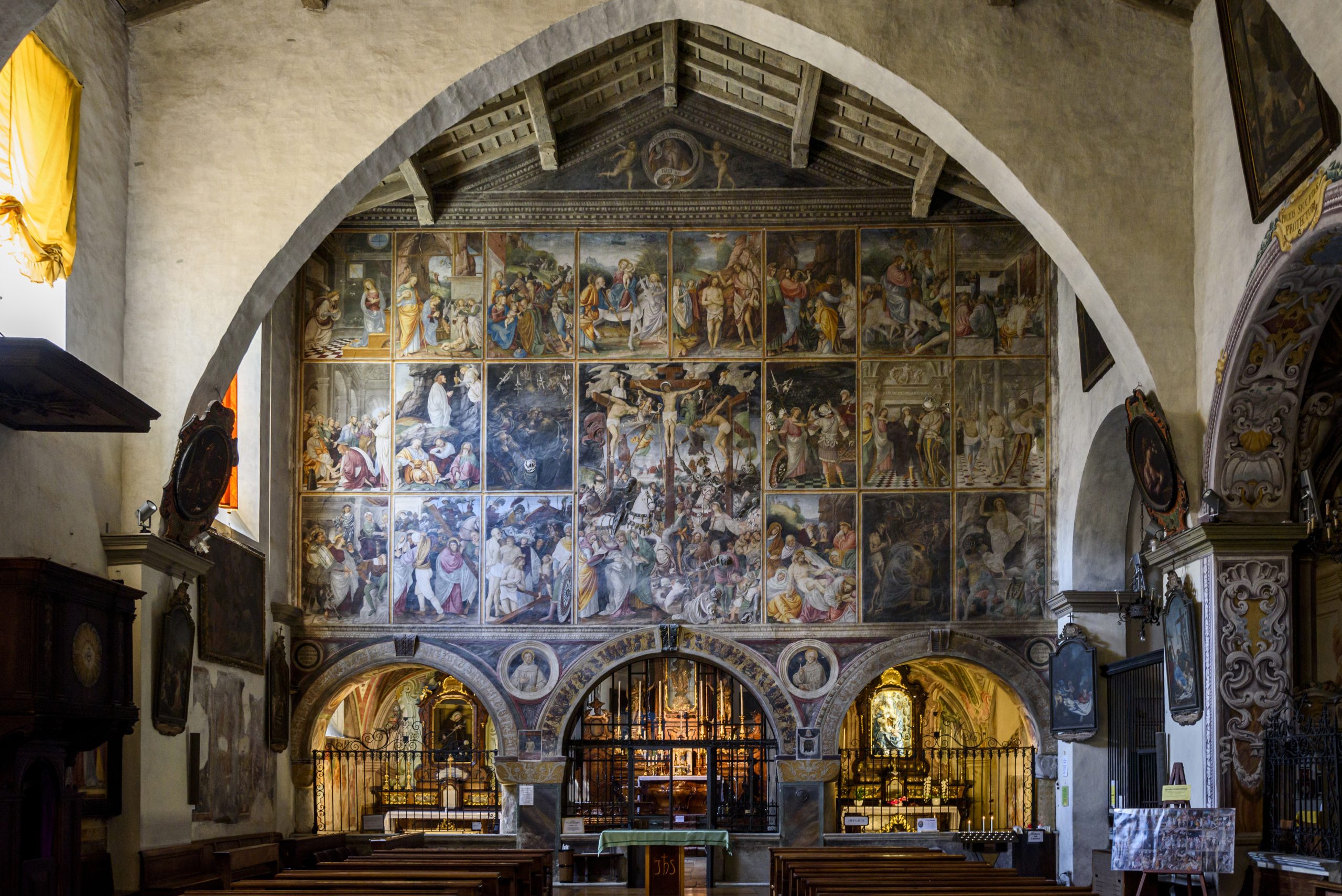
THE HISTORIC DISTRICTS
The city itinerary continues past the house where Gaudenzio Ferrari lived for some time, before entering the historic quarters, first in Ravelli Square (formerly Piazza della Tela) and then in Via Albertoni (formerly Contrada del Vino), until it reaches San Carlo Square, a small square with the scent of history and an incomparable view of the Sacro Monte. The Cesare Scaglia House-Museum is located here.
We then return to Via Umberto I, passing the Handcrafts Shop and Palazzo Racchetti, now home to the Farinone-Centa Civic Library, to continue our discovery of the historic districts in Via Alberganti (former Contrada del Burro [Butter District]). These narrow alleys are the old town centre, commercial streets that still show traces of the old town’s layout featuring courtyards, arcades, frescoes and skilfully crafted balconies.
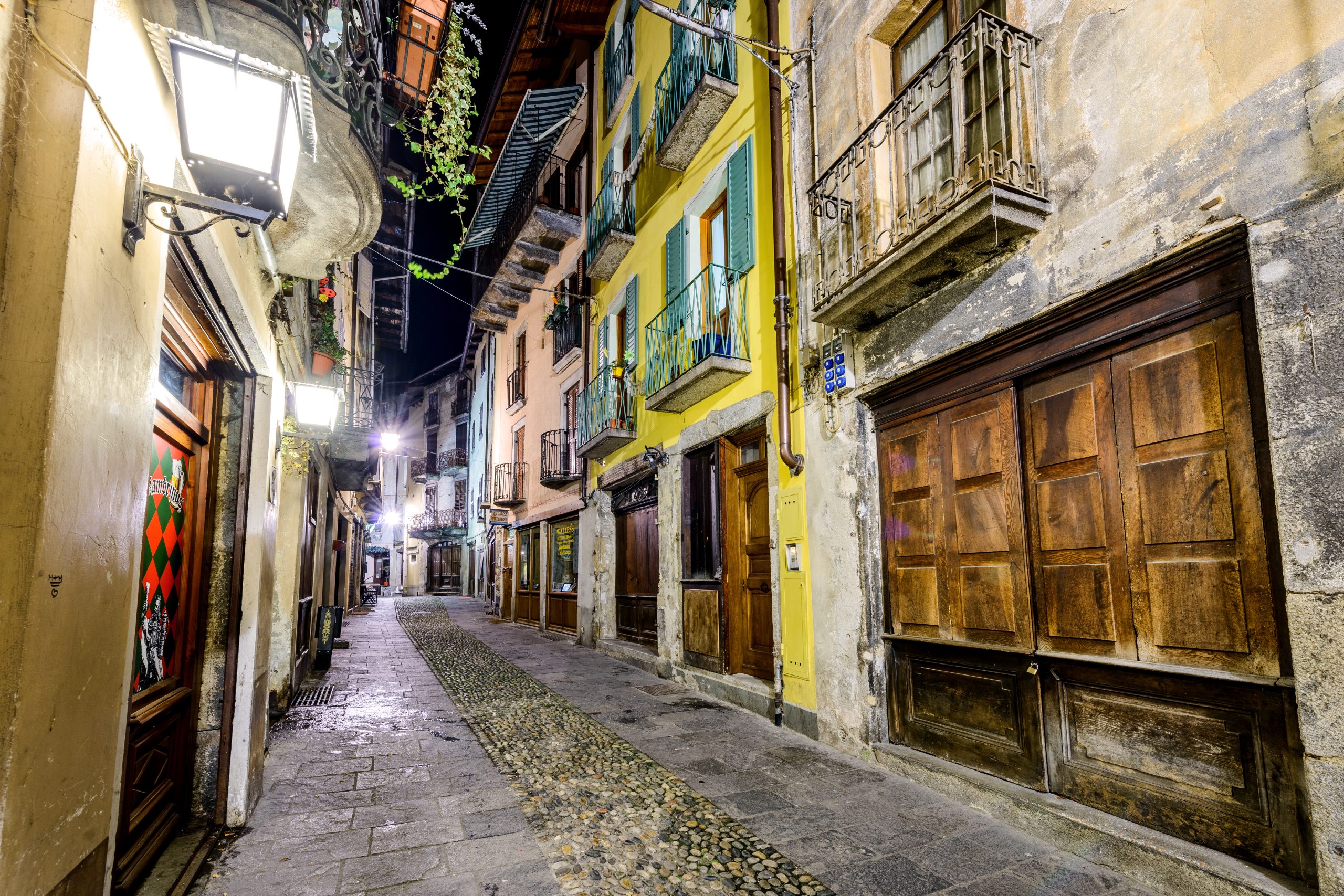
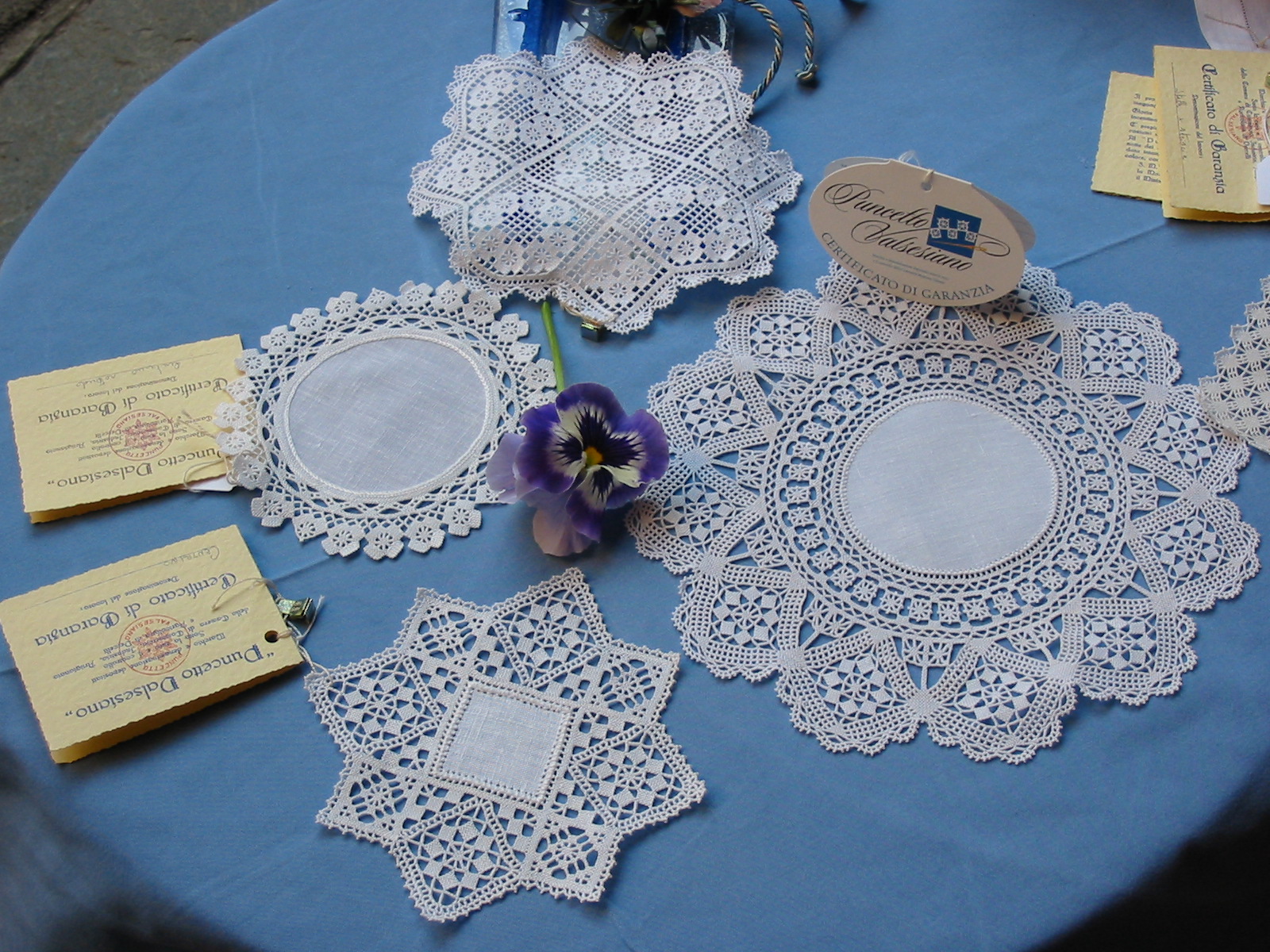
THE ANTONINI BRIDGE, THE MASTALLONE STREAM AND SOTTORIVA
A little further on, you will see the Antonini Bridge overlooking the green waters of the Mastallone stream. Cross it to enter Old Varallo, the original heart of the town. Crossing the bridge, on the right you will immediately notice Palazzo Scarognini d’Adda, decorated with noble coats of arms and now home to the Fishing Museum and cultural events; on the left stands the Church of St. James. Keeping the church to the right, one begins to descend along the “El Raffa” promenade, which for a few hundred metres skirts the Mastallone stream. In fine weather, you can sit down and enjoy a moment of peace on the renowned Varallo beach.
Crossing the bridge once again, you come to Via Osella, built in 1838 to facilitate the arrival of carts in the centre without having to cross the narrow, historic streets. Moving on you find Calderini Square and, on Via Draghetti you will walk along the former Monumental Prisons to enter the Sottoriva district, which preserves its medieval origins intact. Then taking any small road uphill, a few steps will lead you to the climb back to Vittorio Emanuele II Square.
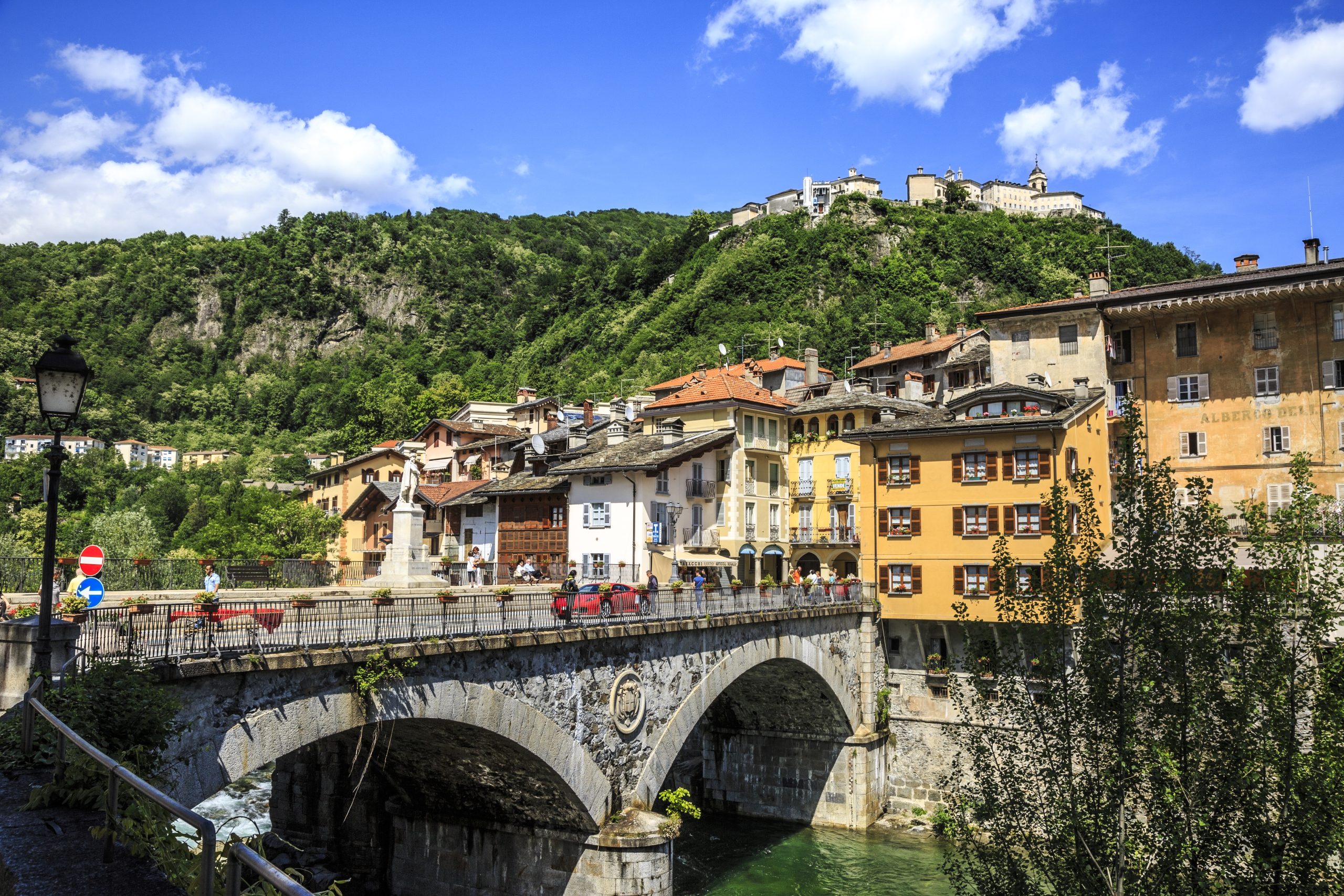
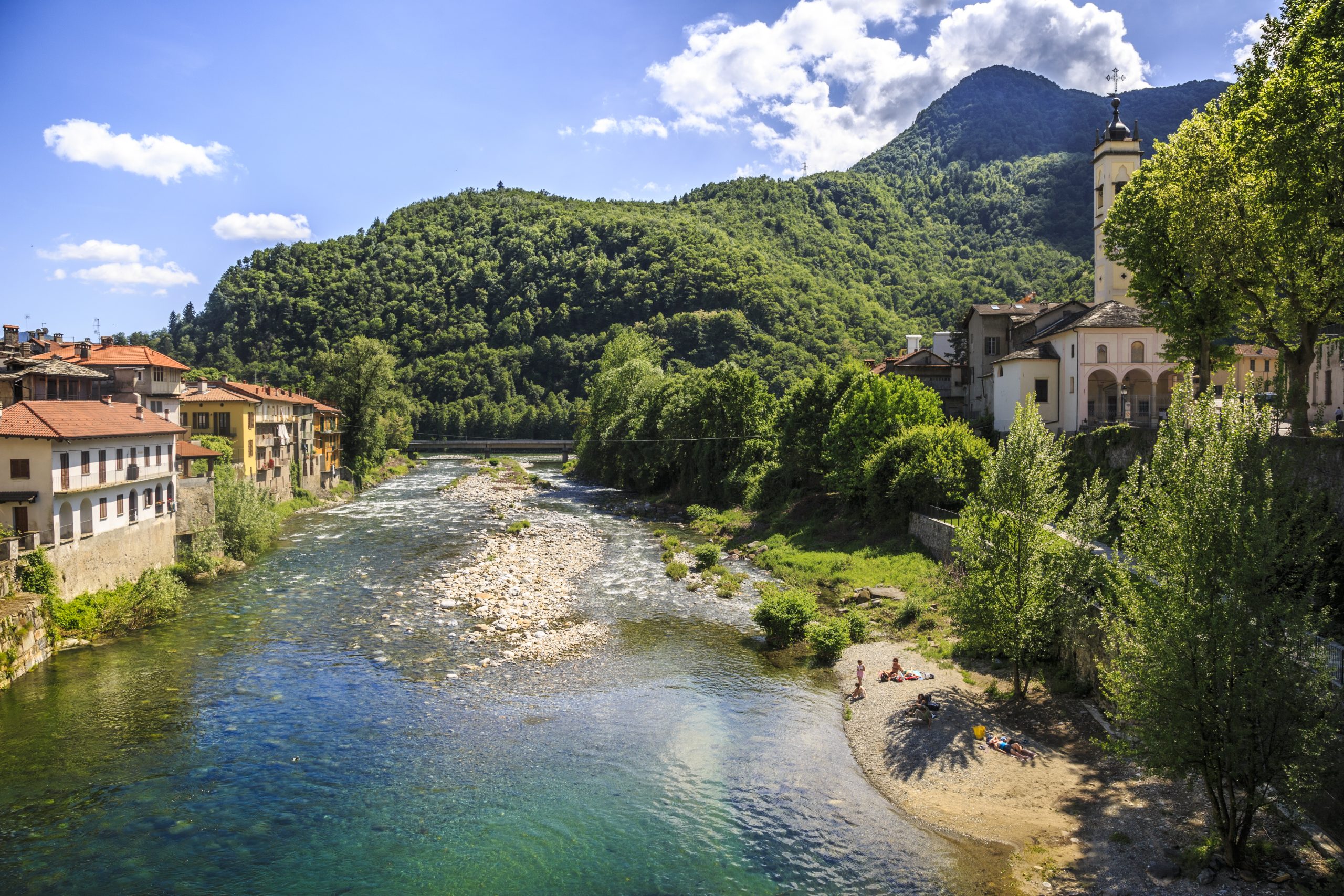
OUTSIDE THE CITY CENTRE
Outside the historical centre, Varallo is home to other treasures, such as the Chapel of the Madonna of Loreto, at the junction with the road to Civiasco, with magnificent frescoes by Ferrari; the Church of St. Mark, one of the oldest in the valley with valuable frescoes by Giulio Cesare Luini; the Energy Museum and the former Hydrotherapy Establishment, the centre of elite tourism in the Belle Époque and today home to the public vocational institute IPPSAR.
This itinerary to discover Varallo provides countless glimpses of the Sacro Monte and period architecture, a view enriched by the marvellous murals of the WARAL Art Urban Project.
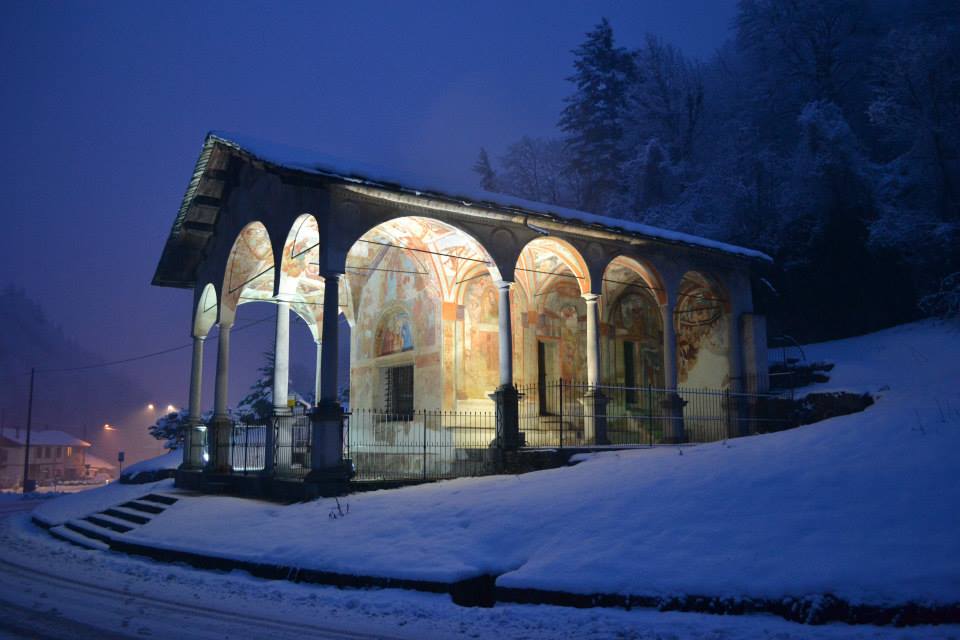

Ville storiche
Collegiata di San Gaudenzio
Palazzo dei Musei
Contrade storiche
Casa – Museo Cesare Scaglia
Bottega dell’artigianato
Contrada del Burro
Ponte Antonini
Museo della Pesca
Varallo Beach
Museo dell’Energia
Chiesa di San Marco
Cappella della Madonna di Loreto
how to get to Varallo
BY HIGHWAY
From Milan: A4 Milan-Turin exit Agognate or junction A26 at Biandrate, direction Gravellona Toce to Romagnano-Ghemme.
From Turin: exit Greggio or junction A26 at Biandrate, direction Gravellona Toce to Romagnano-Ghemme.
From Vercelli: A26 Genova-Gravellona Toce, exit Romagnano-Ghemme. From Romagnano Sesia follow SP 299 to Varallo-Alagna Valsesia.
BY BUS
A daily bus service connects Varallo to Milano, Torino, Vercelli, Novara. Discover how to get to Varallo.
Plan your holiday
Where to eat, where to sleep, how to get around: plan your trip to Valsesia and Vercelli!
Richiedi
informazioni
su questo
itinerario
Compila il form per saperne di più su questo itinerario

A day in Gattinara
Gattinara CITY OF WINE, LAND OF RICE AND GOOD LIVING
A one-day itinerary to discover Gattinara, a Romanesque town famous for its excellent wines renowned throughout the world
THE HISTORIC CITY CENTRE OF GATTINARA
The city tour can easily begin in the historical city centre, whose regular layout dates back to the foundation of the medieval tax-free town (burgfrieden) in 1242, where traces of the Romanesque origins are preserved, underscoring the city’s antiquity and cultural relevance. The history of Gattinara is closely linked to that of the Arborio family, to which one of the greatest European politicians and diplomats of the early 16th century belonged: Mercurino Arborio.
St. Peter’s Church is the first stop on this itinerary. Rebuilt in 1881 in neoclassical forms on a previously existing Roman building, the Church of St. Peter is a typical view of Gattinara. The dome of the building is one of the first Italian constructions made of reinforced brick.
Not far away stands the Palazzo di Città, the current seat of the Town Hall. Originally the residence of the Marquis Arborio Gattinara, it was designed by the architect Delmastro from Gattinara. Then there is Palazzo Arborio, built around 1450 and now home to the Gattinara Cultural Association. The interior, which preserves precious frescoes, can be visited by appointment.
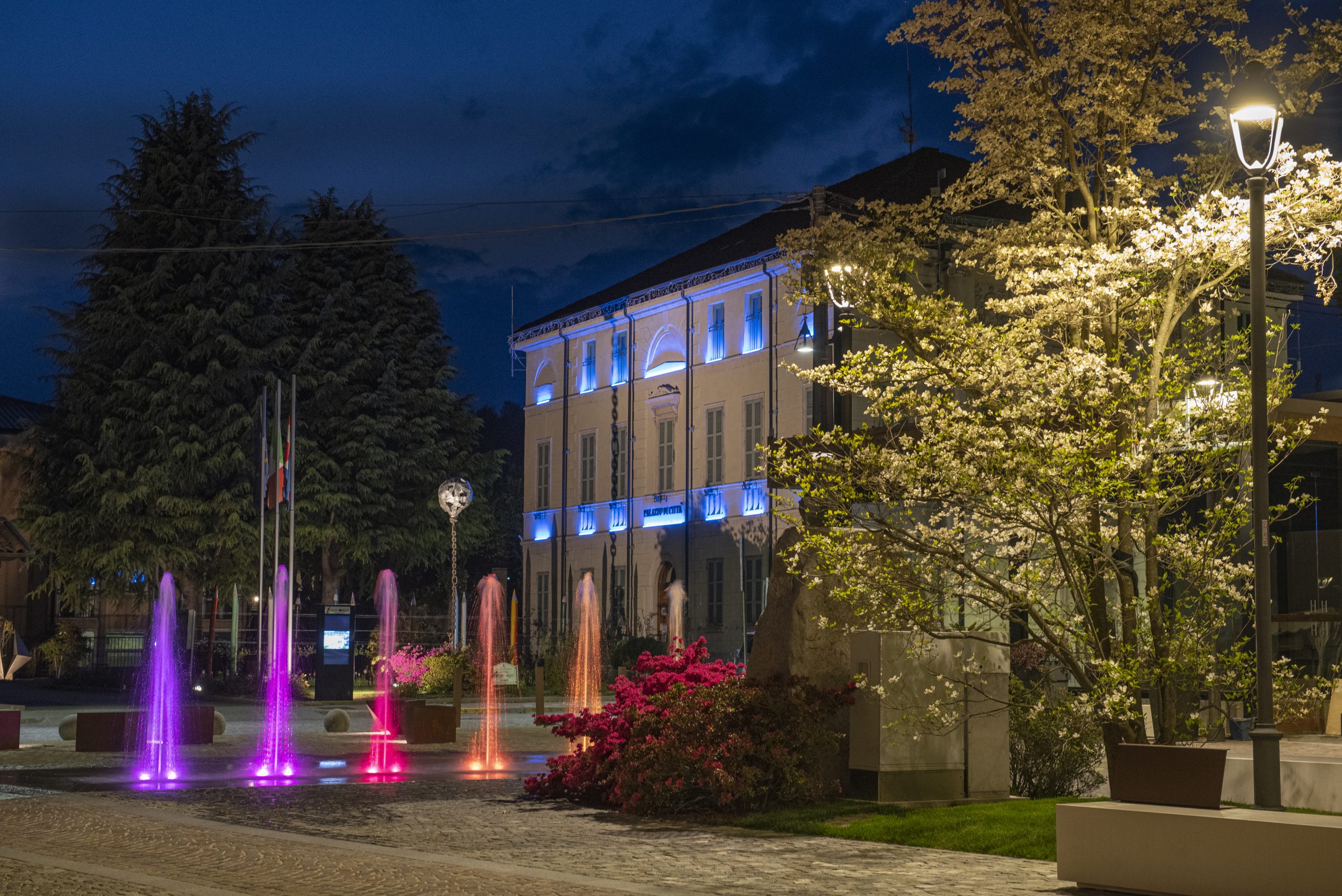

REGIONAL WINE SHOP AND CITY CHURCHES
Continuing the itinerary through the streets of the centre of Gattinara, we reach Paolotti Square, which hosts the town markets on Fridays and Saturdays, and where we find the namesake Villa Paolotti, a late 19th-century building that today houses the Regional Wine Shop and also a conference hall adjacent to the G’ART exhibition space. The Ecomuseum of Gattinara is also established at Villa Paolotti. It exhibits some interesting objects and tools of peasant life in the past, providing a truly unique historical testimony for future generations. Three moments of rural life have been recreated inside, precisely childhood, the kitchen and the area that preserves tools and utensils related to working life.
The city tour continues with a visit to the Church of St. Martha, built in 1450 and rebuilt in 1844. A building with a central plan that today hosts many musical concerts for its excellent acoustics.
Nearby is the Church of St. Francis, built on the ruins of the Church of St. Julius, an example of early Baroque architecture. The inside has a precious wooden altar with detailed carvings. Continuing towards Corso Garibaldi, you reach the Church of the Our Lady of the Holy Rosary, which is equally Baroque in form. Inside there is a black marble altar and a valuable triptych attributed to Giovenone.
Not far away stands the Church of the Madonna di Rado which, before 1242, the year the village was founded, was considered the most important place in the area. Many faithful visit the site to honour the Black Madonna, of whom a wooden statue dating back to the 15th century is preserved here.
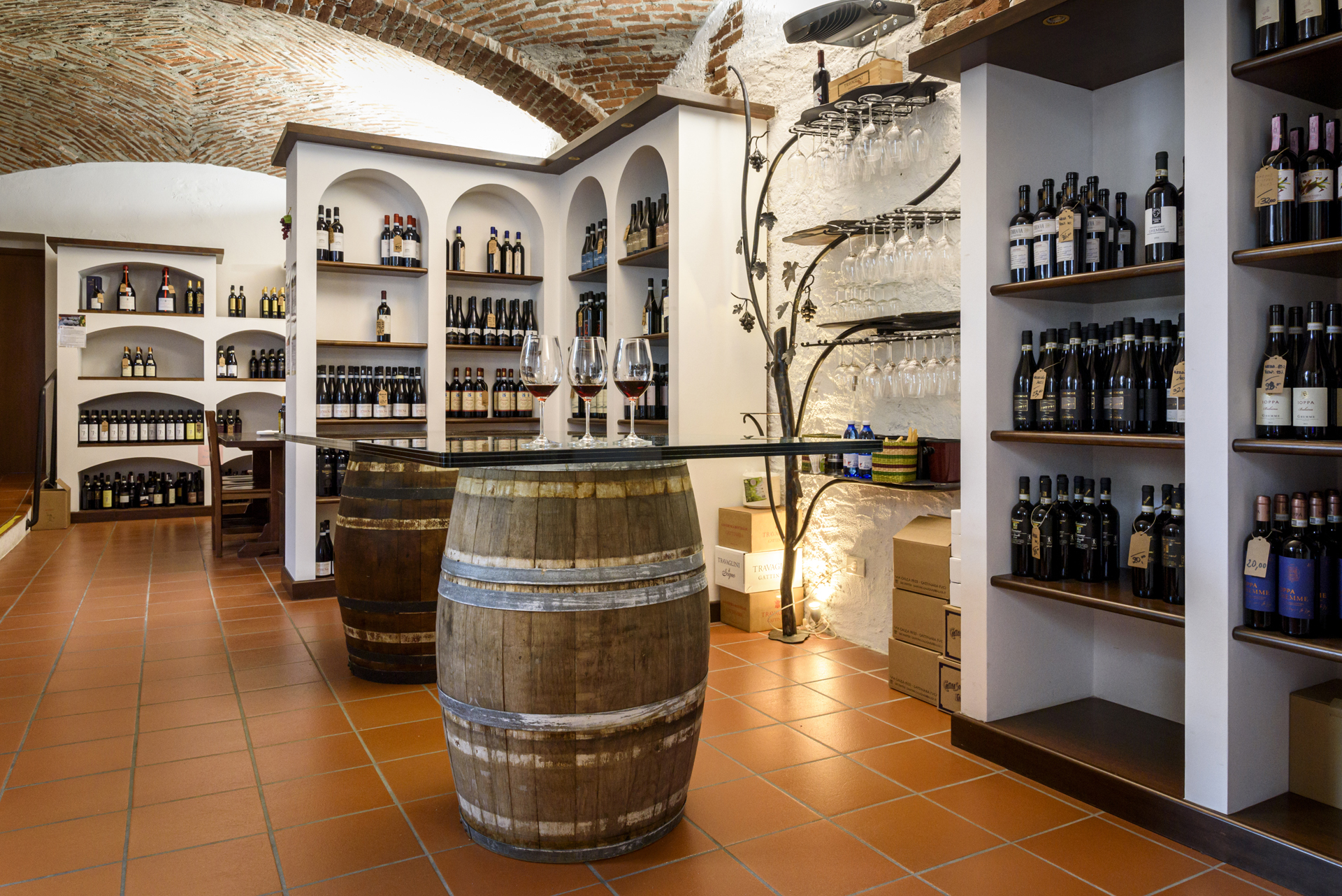
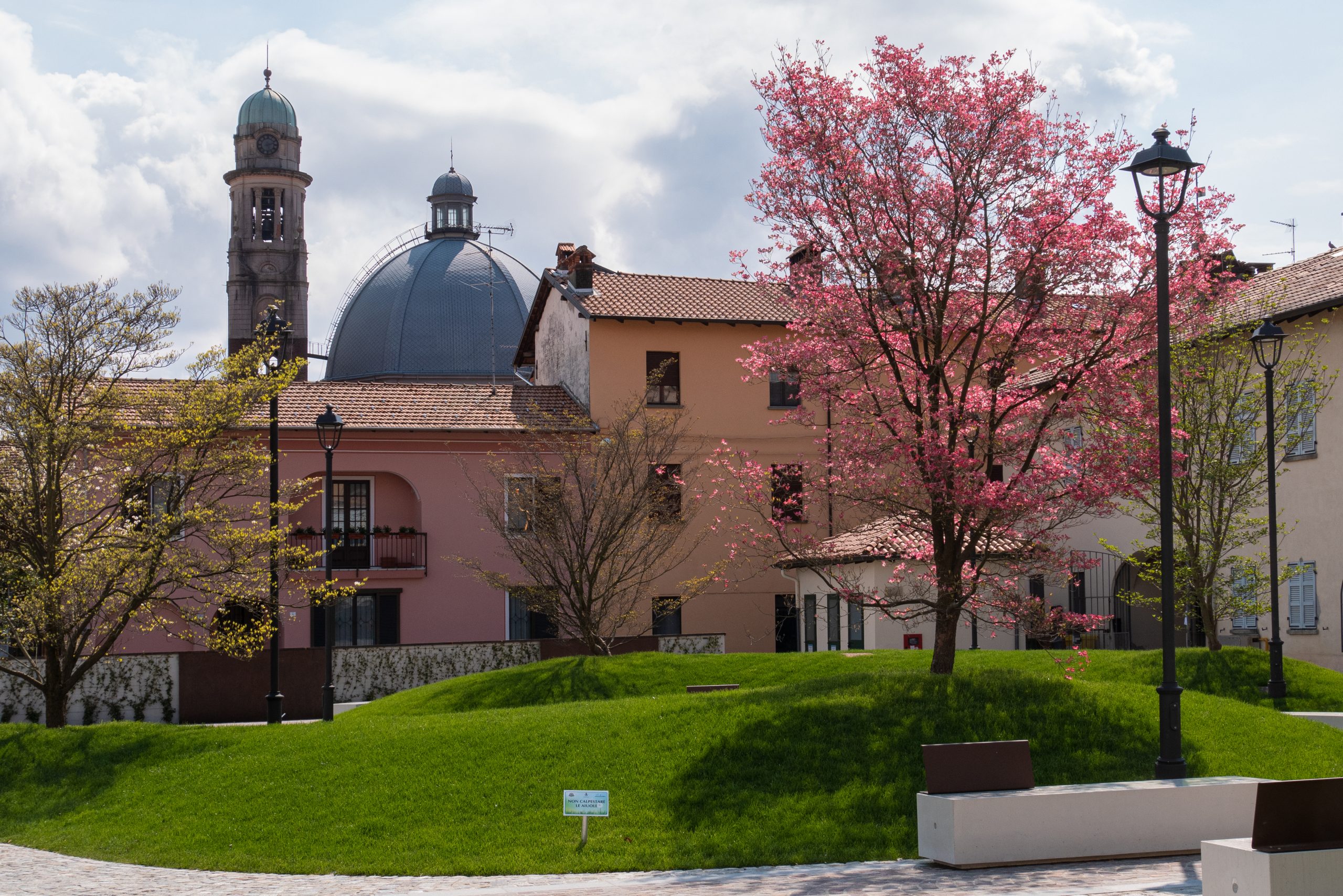
THE HIGH CITY: THE CASTELLE TOWER, THE CASTLE OF ST. LAWRENCE AND THE GIANT BENCH
On the top of one of the highest hills in the area stands the Castle of St. Lawrence, built in 1187 by the Vercelli Municipality to guard the valley. Abandoned around the 17th century, only the ruins of the fortification remain today. The large entrance gate is still intact. The remains of the central keep and the Church of St. Lawrence can be seen within. The Castle of St. Lawrence, which can be reached by an easy uphill walk, is one of the best vantage points in the area, offering a beautiful view of the city and surrounding hills.
Another particularly popular vantage point is the square in front of the Castelle Tower square, which offers an enchanting view of the Gattinara vineyards. It is located a short distance from the town centre, which can be reached with a 15-minute walk or more conveniently by car. The Tower, now an undisputed symbol of the town, dates back to the 11th century and is a vivid testimony to the important medieval fortified complex that surrounded the entire hillside area. The view is enchanting, especially on a clear day when you can admire Mount Rosa framing the Gattinara hills for a truly unique scenic impression! A few metres from the Tower, it is a must to take a moment for an original selfie sitting on the Giant Bench. The one in Gattinara is number 35 and is red, as red is the excellent wine produced here.
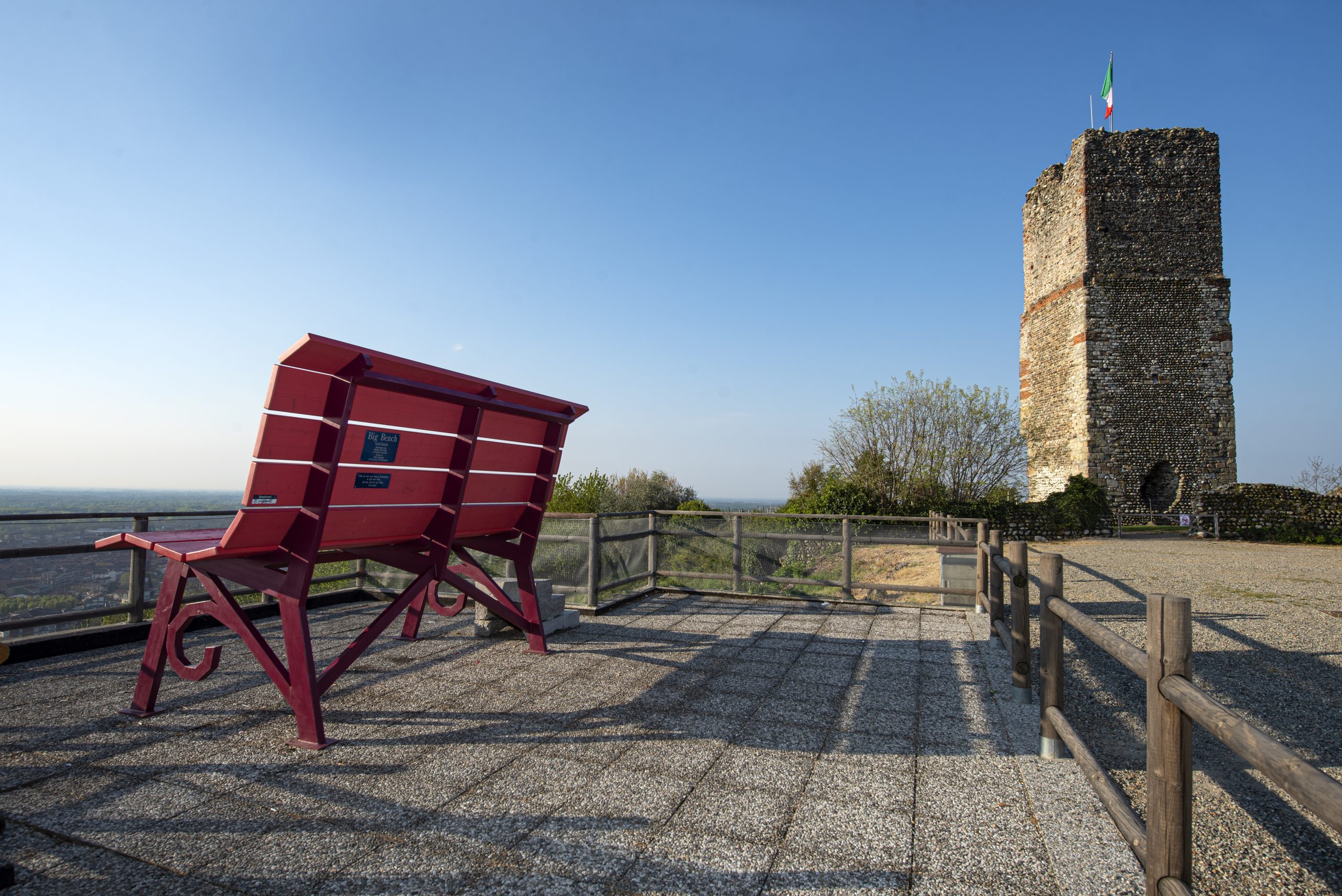
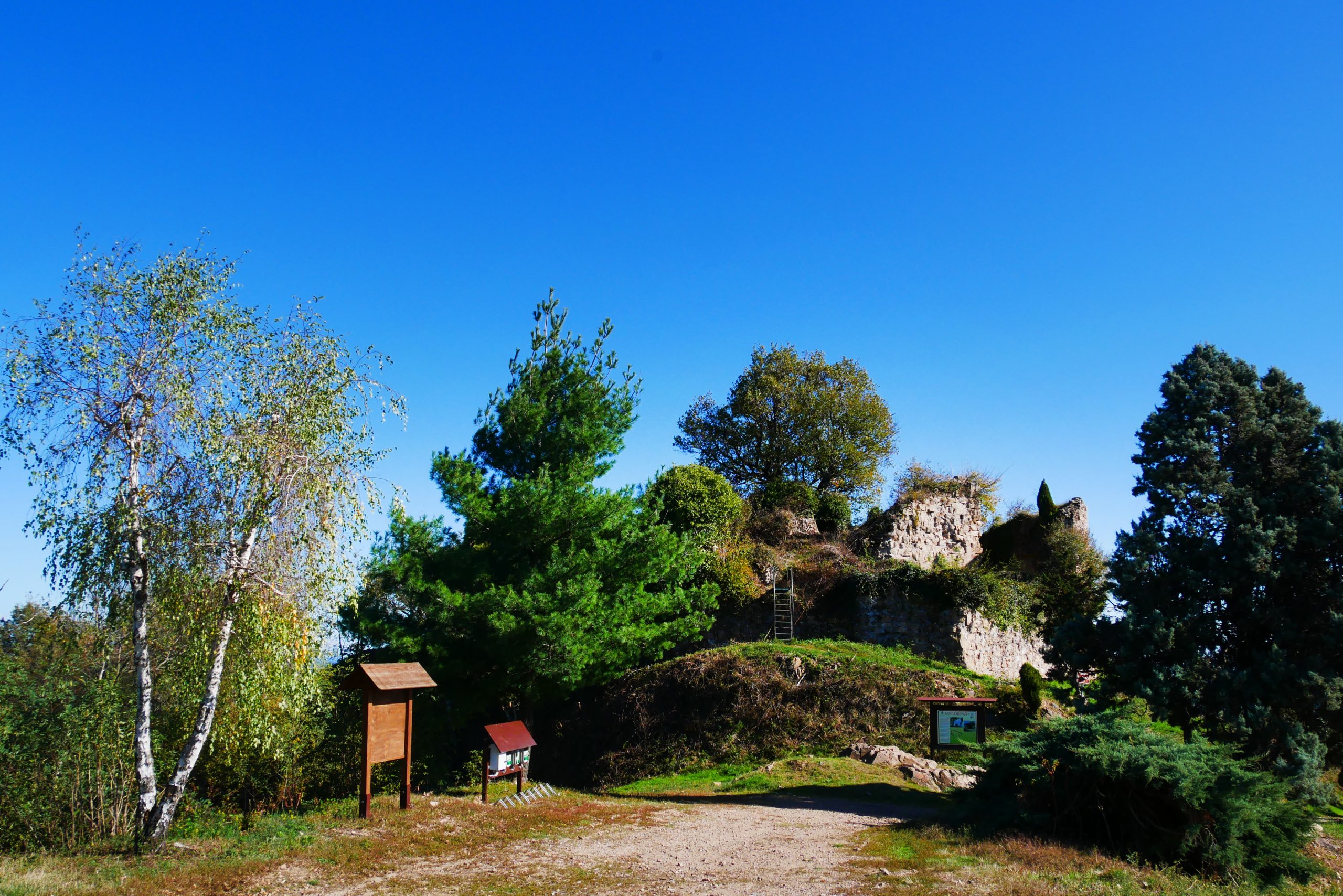
FOOD AND WINE EXCELLENCE
The cultivation of the Nebbiolo vine, which yields the Gattinara D.O.C.G. and the Coste della Sesia D.O.C.G., some of the most appreciated wines in Italy, finds fertile ground in the Gattinara area. This sumptuous wine of varied richness owes its special features to the Super Volcano, which has favoured a variety of soils that endow this wine with unique and special traits. Villa Paolotti houses the Regional Wine Shop where the great wines of High Piedmont and various products of excellence can be found.
Gattinara is also located in the Baraggia area where the first and only Italian PDO rice is produced, an excellence recognised by famous Italian and international chefs. The rice of Baraggia Biellese and Vercellese is the utmost expression of the great rice-growing tradition of the Vercelli area.
However, the Gattinara itinerary cannot be considered complete without the addition of a sensory note, which includes a visit to local winery for a tasting experience of the excellent local wines.
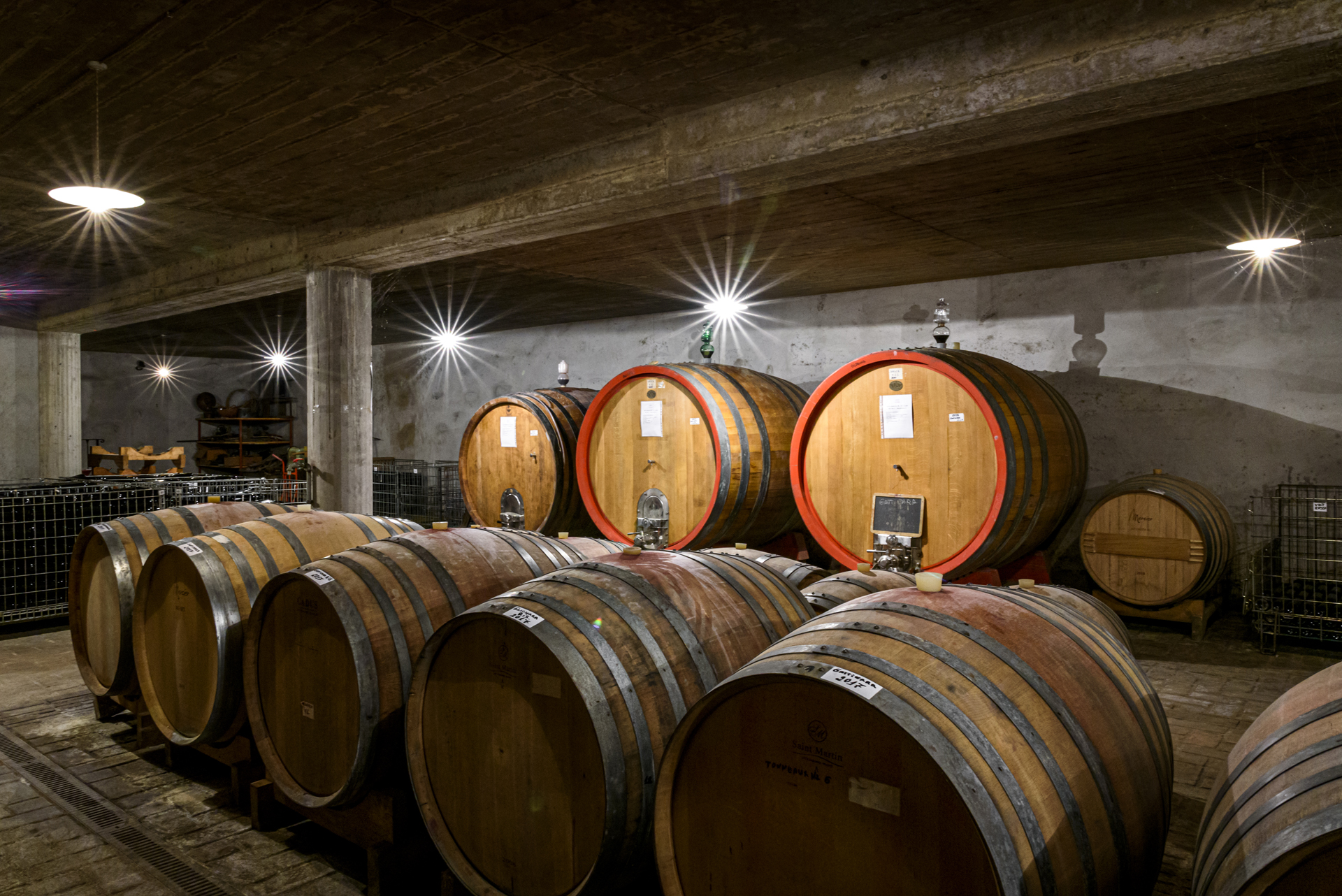
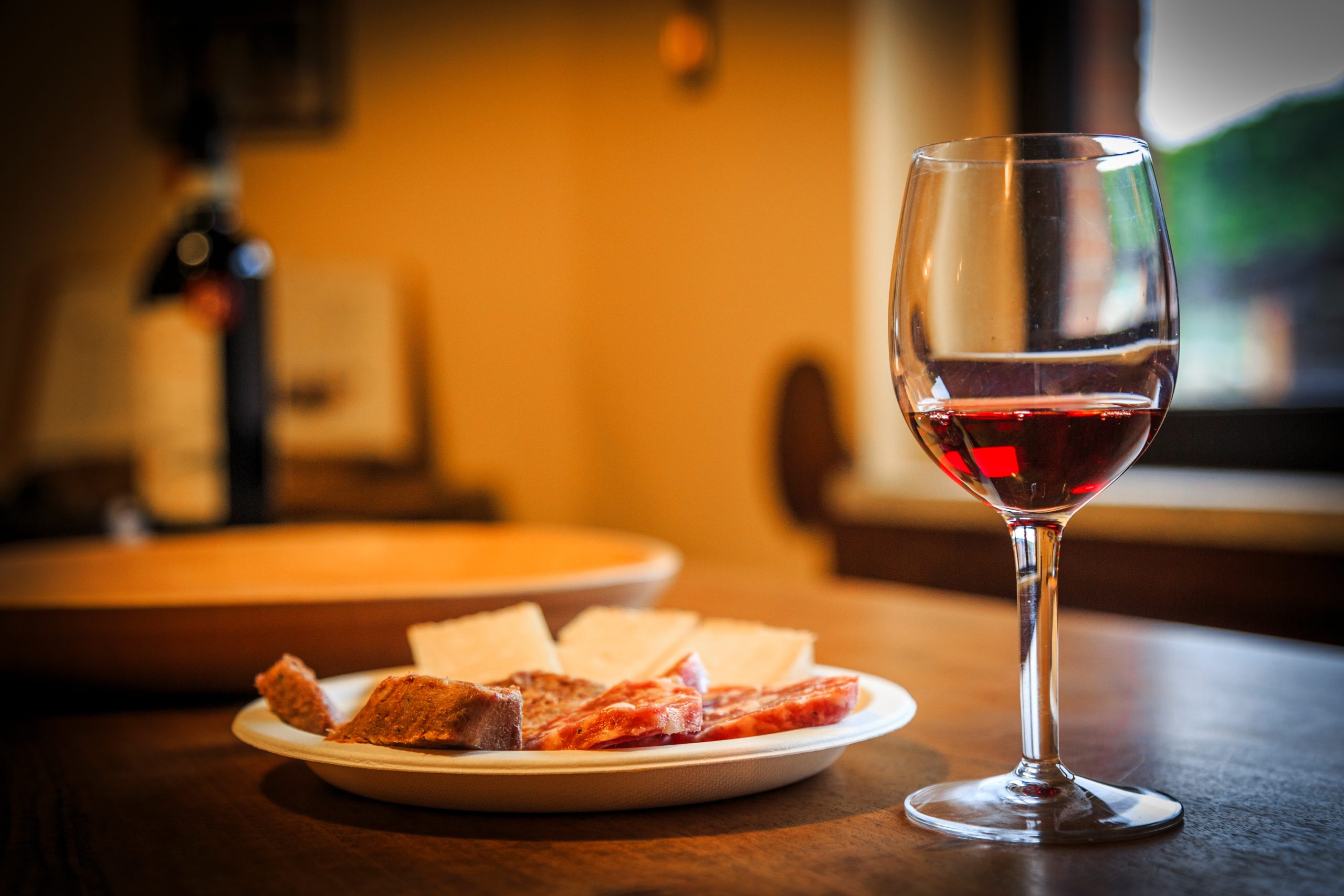
Chiesa di San Pietro
Palazzo di Città
Palazzo Arborio
Piazza Paolotti
Villa Paolotti
Ecomuseo
Chiesa di Santa Marta
Chiesa di San Francesco
Chiesa della Madonna del Rosario
Chiesa della Madonna di Rado
Castello di San Lorenzo
Torre delle Castelle
Big Bench
Enoteca regionale
Come raggiungere gattinara
IN AUTOSTRADA
A4 Milano-Torino uscita Agognate o innesto A26 a Biandrate, direzione Gravellona Toce, per Romagnano-Ghemme (da Milano);
uscita Greggio o innesto A26 a Biandrate, direzione Gravellona Toce per Romagnano-Ghemme (da Torino);
A26 Genova-Gravellona Toce, uscita Romagnano-Ghemme
Da Romagnano Sesia seguire la SP 299 per Varallo-Alagna Valsesia
IN BUS
Autolinee giornaliere collegano Gattinara con Milano, Torino, Vercelli, Novara. Scopri come arrivare.

Plan your holiday
Where to eat, where to sleep, how to get around: plan your trip to Valsesia and Vercelli!
Richiedi
informazioni
su questo
itinerario
Compila il form per saperne di più su questo itinerario

A day in Vercelli
A JOURNEY THROUGH ART AND CULTURE
IN EUROPE’S RICE CAPITAL
One-day itinerary to explore Vercelli, one of the most fascinating cities in Piedmont, rich in treasures and artistic masterpieces surrounded by a unique landscape.
ABBEY OF ST. ANDREW, MAJOR HOSPITAL AND THE ARCA EXHIBITION CENTRE
The city tour can only start from the symbol of the city of Vercelli, the Abbey of St. Andrew. Built between 1219 and 1227 at the behest of Cardinal Guala Bicchieri, it is an amazing example of a fusion between the Lombard-Emilian Romanesque style and transalpine Gothic architecture. Inside, it houses one of the most beautiful chapter houses in Italy, and a charming rectangular cloister with terracotta frames and paintings from the early 16th century.
Opposite the Abbey stands the Dugentesco Hall, founded in 1224 by the cardinal himself. It is the oldest nucleus of the former Ospedale Maggiore, built to accommodate pilgrims travelling along the Via Francigena. The area has undergone a profound transformation in recent years, making it the city’s new cultural hub, given the presence of the University of Eastern Piedmont and the Civic Libraries.
Continuing along Via Galileo Ferraris, located inside the former Church of St. Mark, the ARCA exhibition centre hosts high standard cultural initiatives and exhibitions, such as the Guggenheim collection and the Magna Charta exhibition (2019). On the opposite side of the square is the Church of St. Bernard, seat of the diocesan sanctuary of Maria Salute degli Infermi, an important centre of devotion.
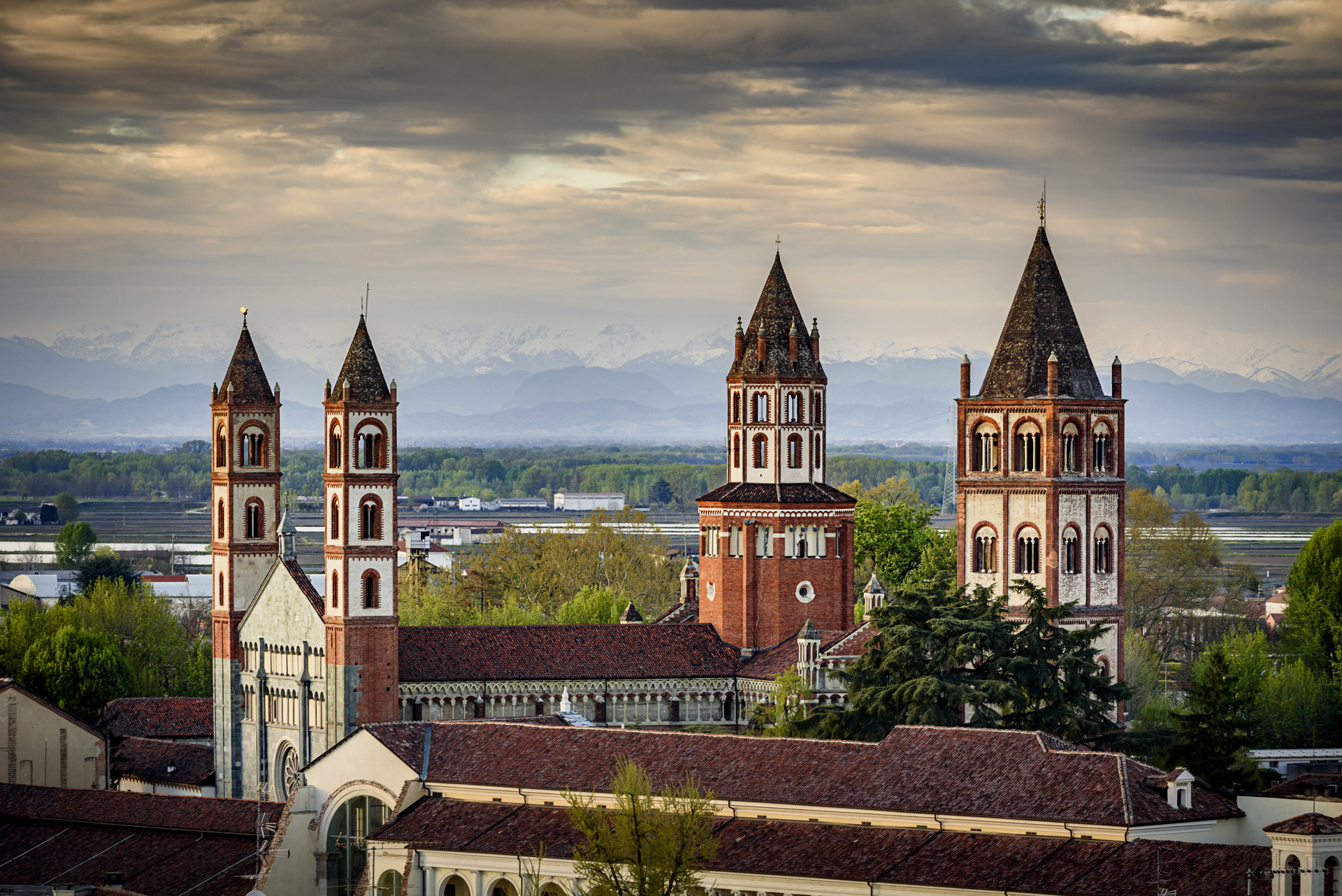
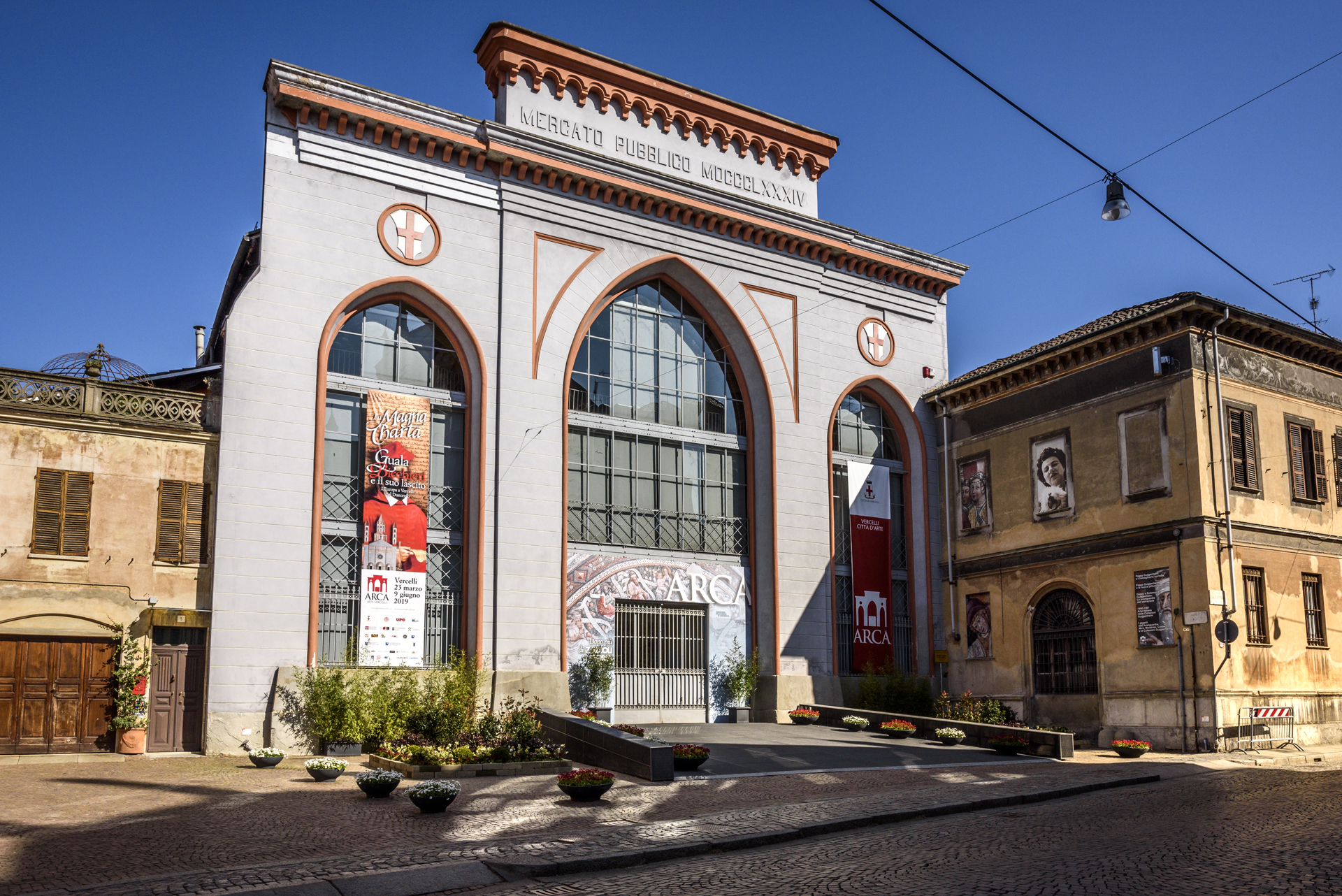
ST. CHRISTOPHER, PIAZZA CAVOUR AND THE ANCIENT BROLETTO
The itinerary continues to the Church of St. Christopher, also known as the “Sistine Chapel of Vercelli”. Built in the first half of the 16th century, it presents impressive masterpieces by Gaudenzio Ferrari, including the altarpiece of the Madonna of Orange Trees.
From here you reach Cavour Square, formerly known as Piazza Maggiore, located in the heart of the historic city centre, a meeting place for all the people of Vercelli and the city’s most important square. Dominated by the mighty Angel Tower, it is characterised by medieval pointed arch arcades. In the centre of the square stands the monument dedicated to Camillo Benso Count of Cavour, built in 1854.
A few steps away from Cavour Square is the ancient Broletto, the original seat of the municipality from 1200 to 1800, and home to another square much loved by the people of Vercelli: Palazzo Vecchio Square, or “Piazza dei Pesci” (Fish Square) to recall the fish market once held here. The square is dominated by the Civic Tower, the oldest tower in Vercelli, which confirms the appellation of turreted city.
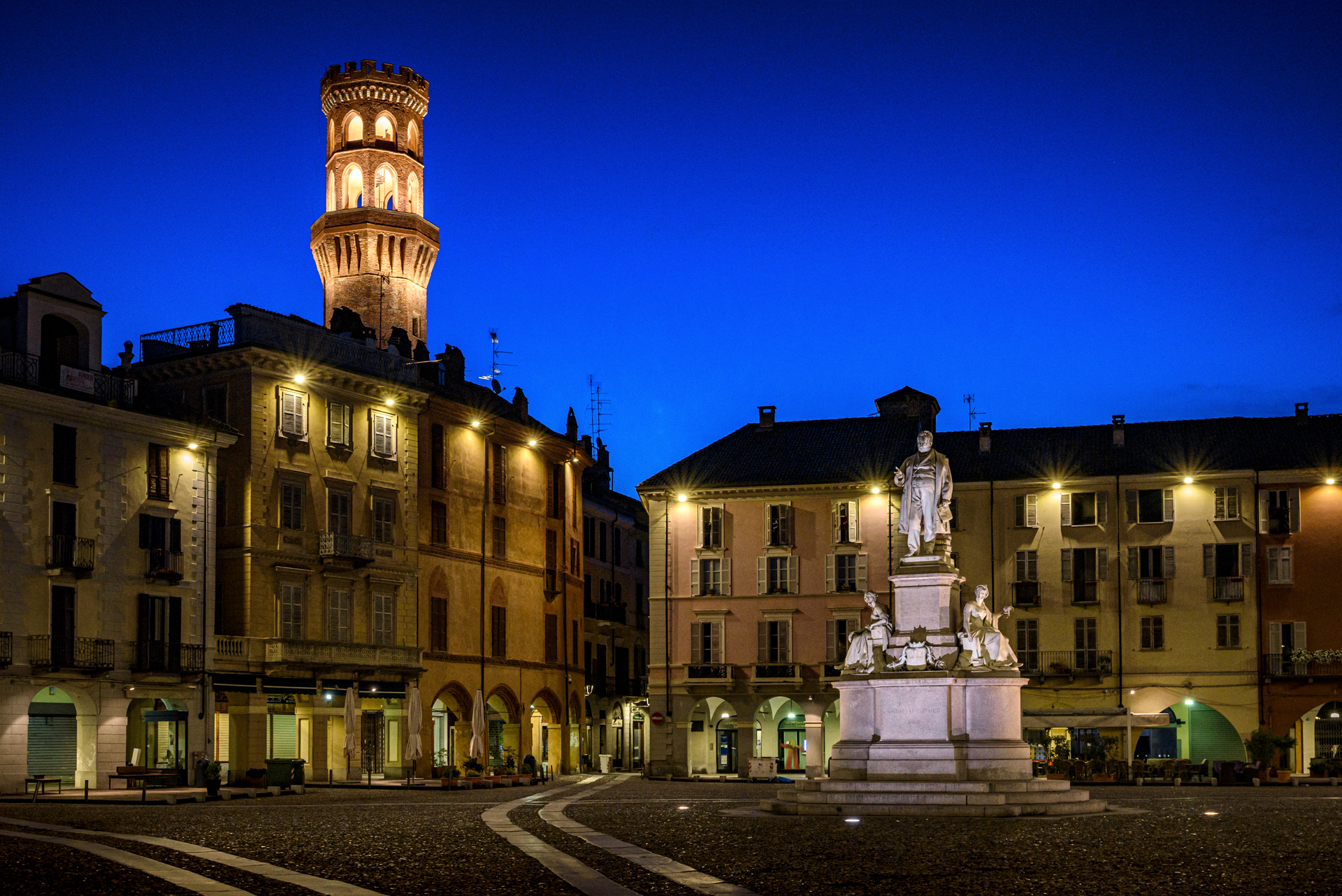
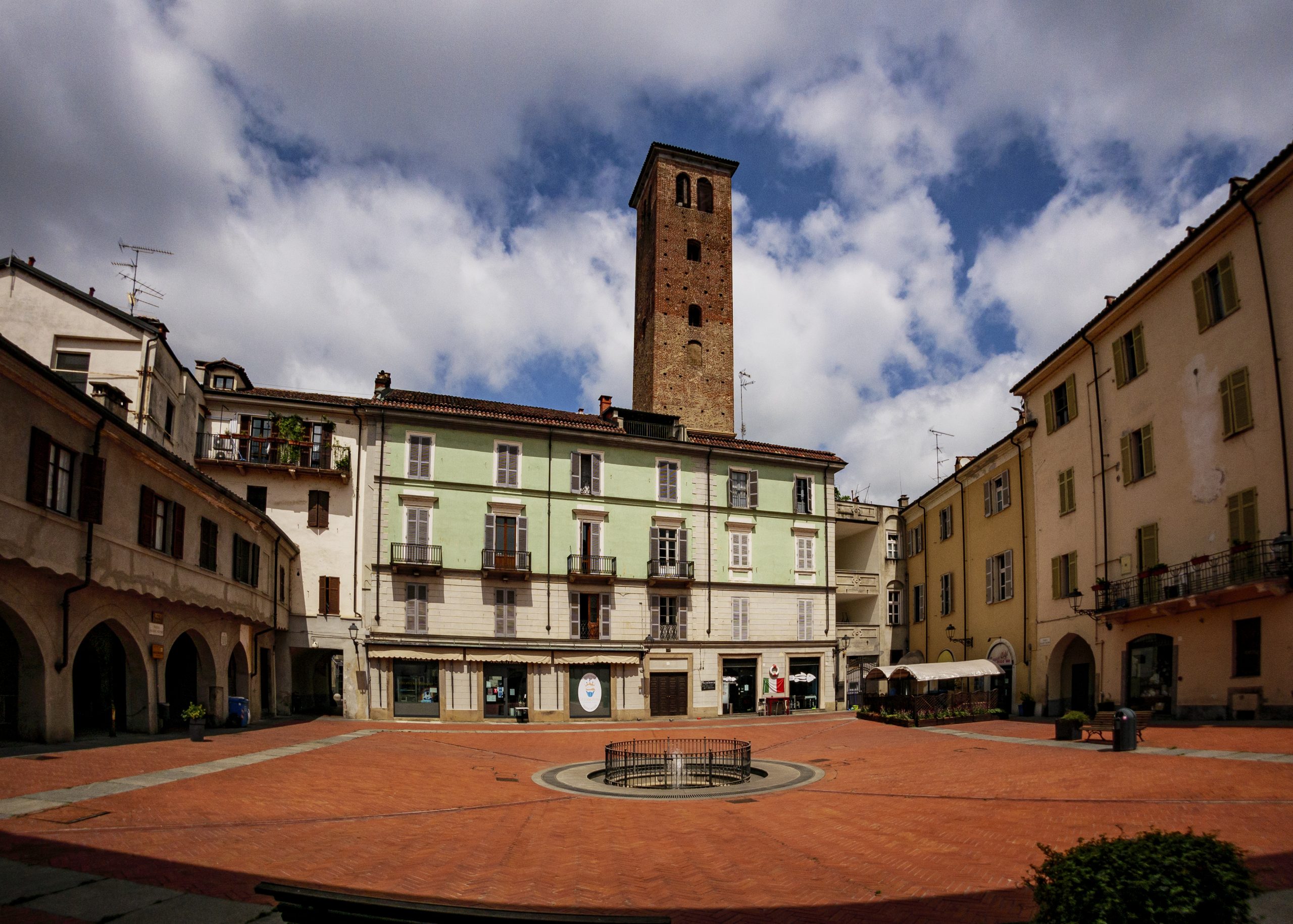
VIA FOA, CORSO LIBERTÀ, AND THE BORGOGNA MUSEUM
Continuing along Via Foa, you come to the Synagogue, the first in Italy to be built in an autonomous building between 1875 and 1878. Continuing along the street you find the Church of St. Julian, embellished with a work by Lanino, and Casa Centoris, famous for the elegance of its courtyard, whose Bramante-style façade has recently been restored. The adjacent Volto dei Centori is a gem. This narrow, photogenic roofed alley leads to Corso Libertà, the city’s best known thoroughfare.
Further on, in the namesake square, stands Palazzo Tizzoni, the historic home of one of the most important Ghibelline families of medieval Vercelli. It is particularly interesting for the frescoes decorating the entrance hall, the only known secular work to date painted by the artist Guglielmo Caccia, known as “Il Moncalvo”. Both structures can only be visited during special artistic heritage days.
Continuing along Corso Libertà, on the right, in the former complex of St. Clair’s monastery, stands the Archaeological Civic Museum (MAC), which displays artefacts from the ancient Roman city of Vercellae. Turn left for the Borgogna Museum, a beautiful house-museum, which, in addition to its rich collection of paintings, furnishings and art objects, houses the picture gallery of Vercelli’s Renaissance paintings collected since the 19th century by the Institute of Fine Arts.
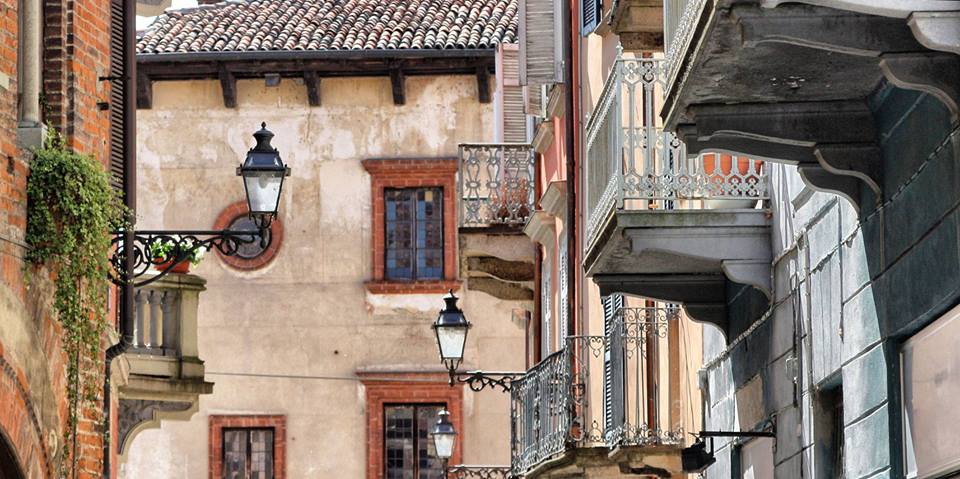
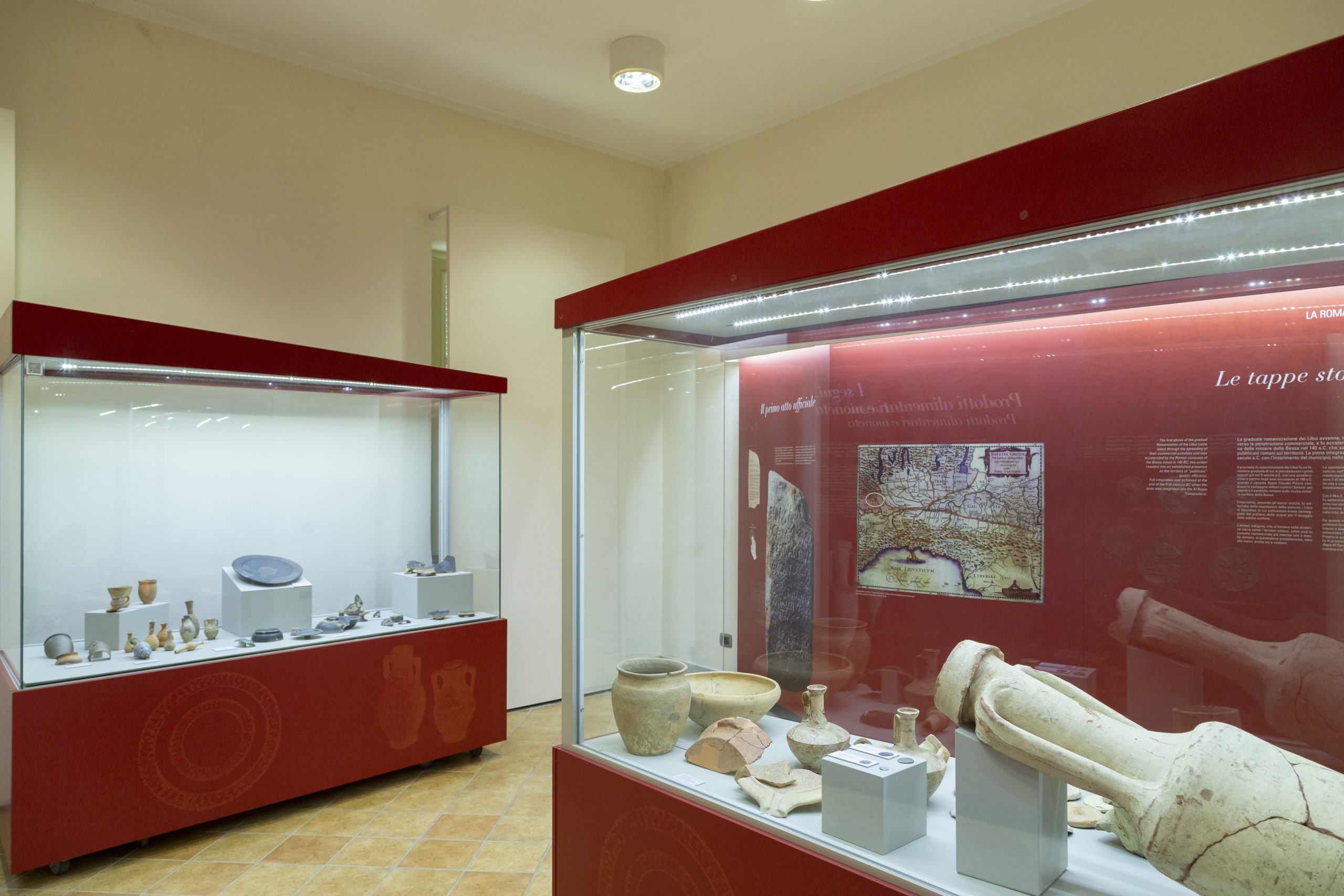
VISCONTI CASTLE, LEONE MUSEUM AND CIVIC THEATRE
Further on, through St. Francis Square, you reach the Visconti Castle. Built with a quadrangular floor plan from 1290 onwards, it became first a Savoy residence, then a prison and, from 1838 to the present day, the seat of the Law Court and, therefore, cannot be visited.
Walking along Via Carducci, with a short deviation onto Via Verdi, a characteristic cobbled street full of craft workshops, you can visit the Leone Museum. Housed in the Renaissance Casa Alciati and the Baroque Palazzo Langosco, it exhibits Palaeolithic, Neolithic and Bronze and Iron Age artefacts, and has a Roman room with some of the oldest evidence of Vercelli’s history.
At the end of Via Verdi you will come across the Civic Theatre, built in 1812-14 and inaugurated on 4 July 1815 with the opera in music “Evelina”. To date the Civic Theatre hosts a wide range of theatrical reviews.
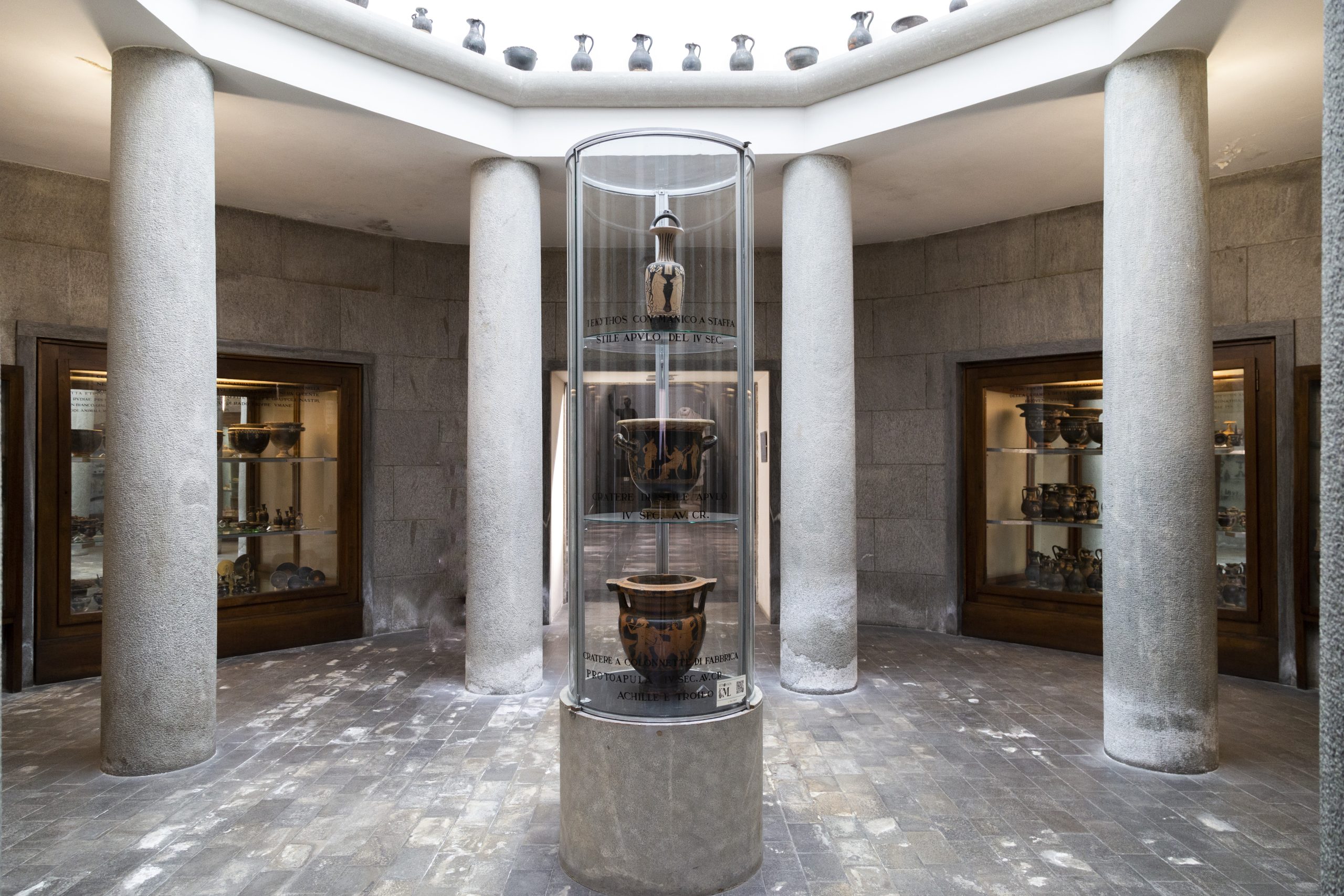
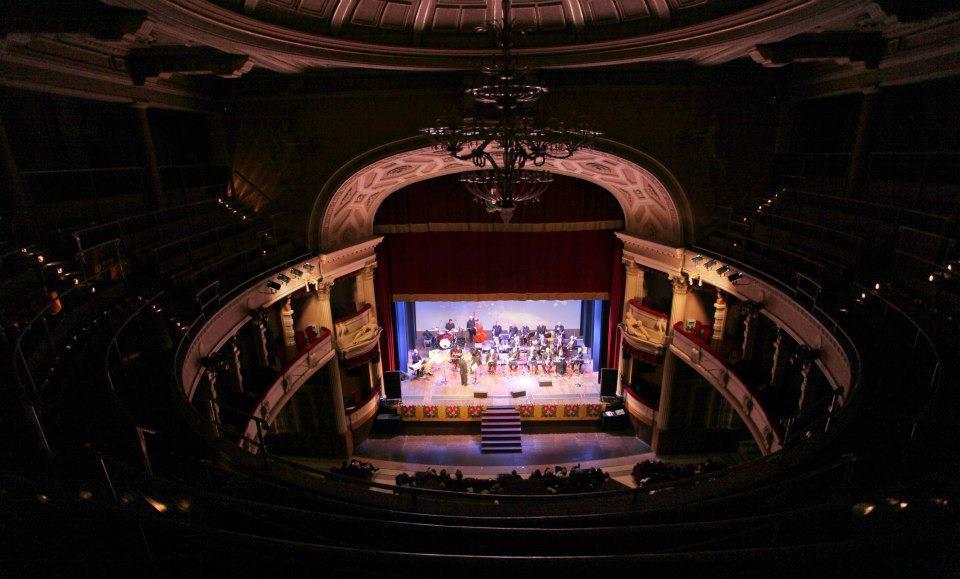
ST. EUSEBIUS CATHEDRAL AND THE CATHEDRAL TREASURE MUSEUM
Walking down Via Monte di Pietà, you reach Angennes Square, packed with important historical buildings, starting with the Archbishop’s Palace, continuing with the Museum of the Cathedral Treasury, the Cathedral of St. Eusebius and the Archbishop’s Seminary.
The Archbishop’s Palace, a Renaissance building of great historical value, houses on the ground floor the Museum of the Cathedral Treasury, which exhibits precious reliquaries, expertly crafted items in gold, liturgical furnishings and the “Vercelli Book”, a famous codex written on parchment in the Anglo-Saxon language dating back to the 10th century.
St. Eusebius Cathedral, built as a cemetery basilica from the 5th century onwards, and rebuilt in 1570, has an imposing Baroque façade. The Archbishop’s Seminary was established in 1572. The oldest part is designed by Filippo Juvarra. It is home to the Agnesian and Diocesan Library.
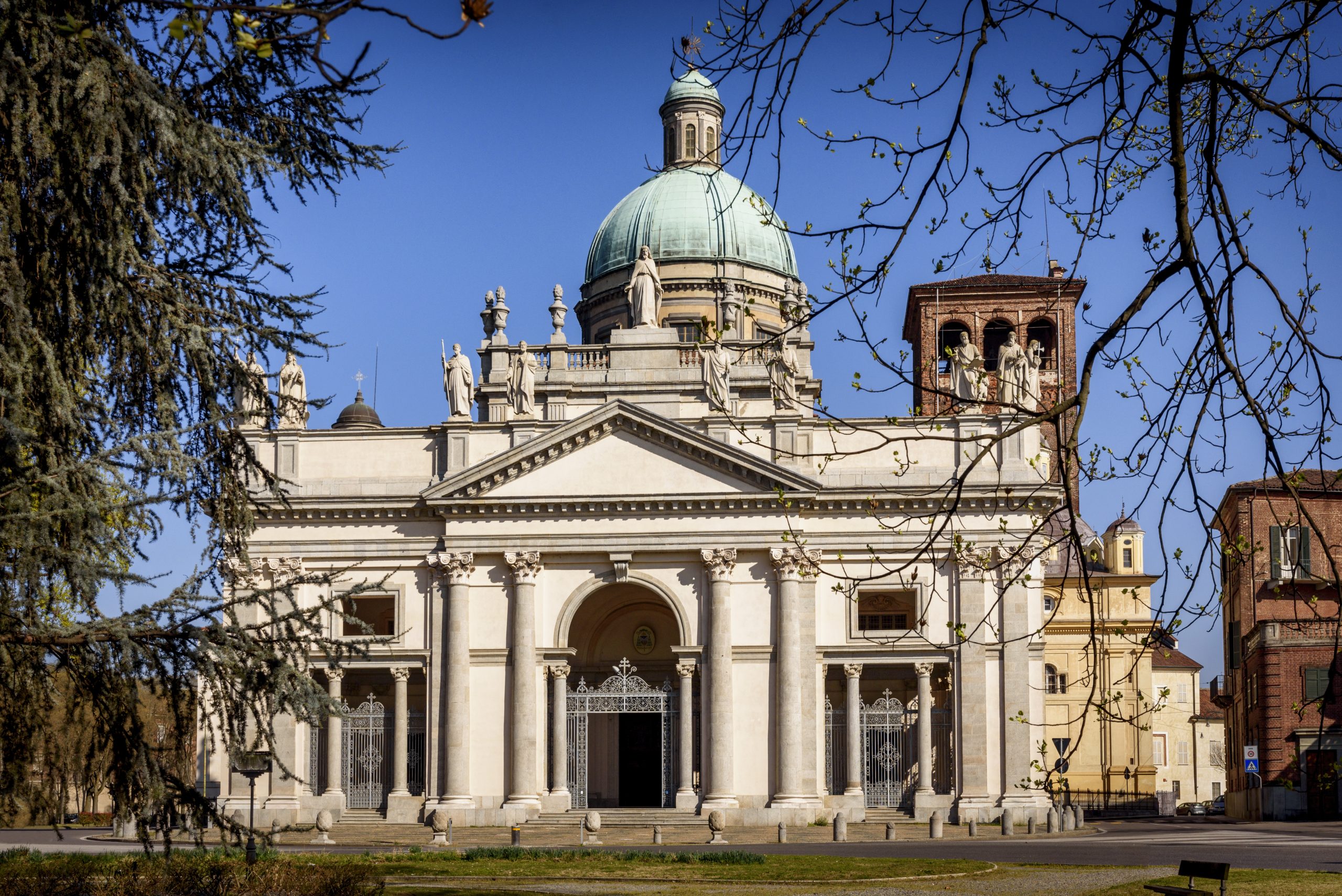
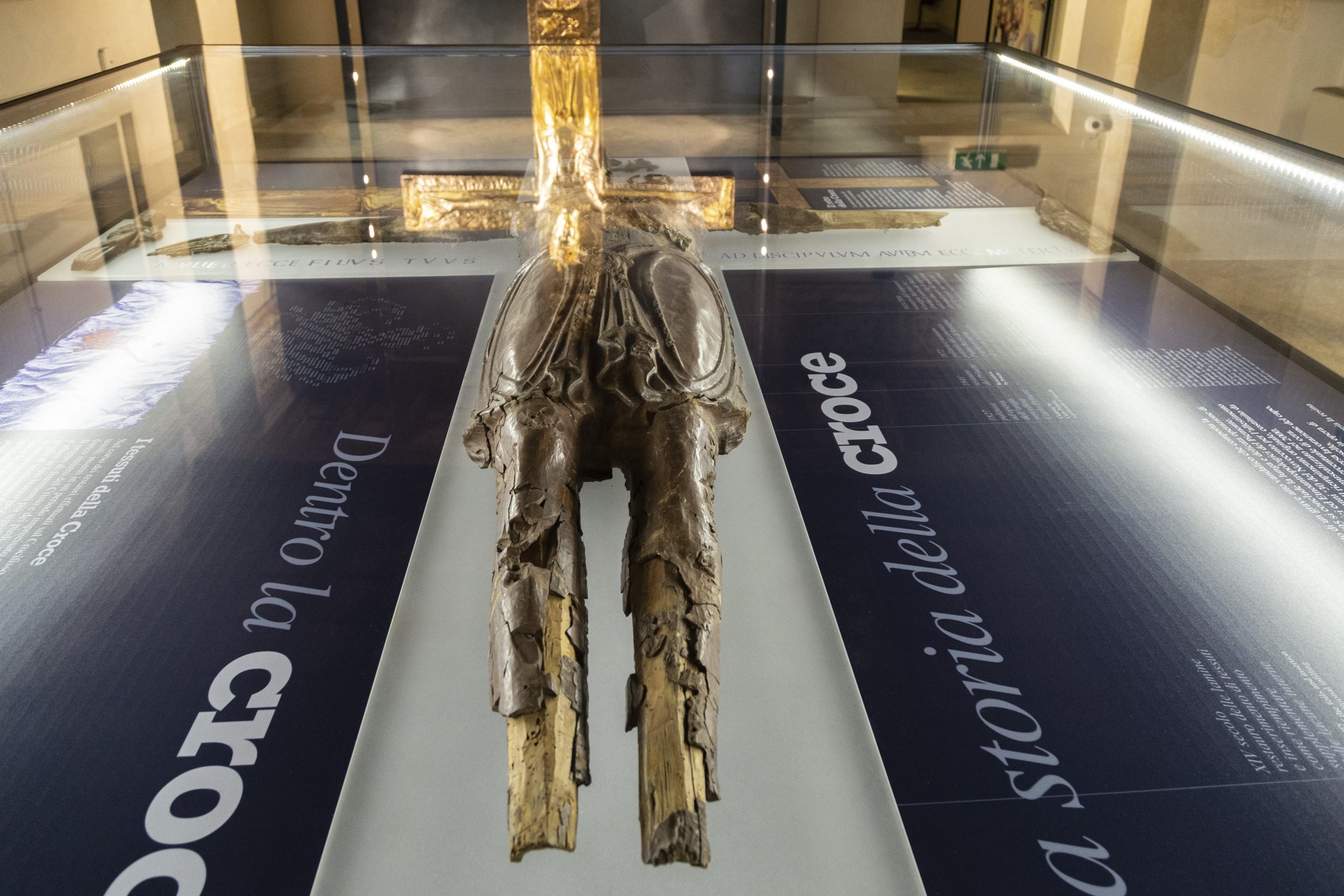
Abbazia di S. Andrea
Costruita fra il 1219 ed il 1227 per volere del cardinale Guala Bicchieri, la Basilica rappresenta uno splendido esempio di fusione tra lo stile romanico lombardo – emiliano e l’architettura gotica d’oltralpe. Al suo interno, è ospitata una delle più belle sale capitolari d’Italia, e un incantevole chiostro rettangolare con cornici in cotto e pitture dell’inizio del ‘500.
Salone dugentesco e Antico Ospedale Maggiore
Antistante la Basilica si trova il Salone Dugentesco, fondato nel 1224 dallo stesso cardinale, che costituisce il nucleo più antico dell’ ex Ospedale Maggiore, sorto per accogliere e prendersi cura dei pellegrini e viandanti che percorrevano la Via Francigena. Pregevoli il portico ad arcate e la sala interna affrescata suddivisa in tre navate, spesso aperti e visitabili in occasioni di mostre ed eventi.
Polo espositivo Arca
Ubicato all’interno della chiesa di San Marco, il polo espositivo ARCA ospita iniziative culturali e mostre di alto livello.
Chiesa di San Bernardo
Sul lato opposto della piazza è situata la chiesa di San Bernardo, sede del santuario diocesano di Maria Salute degli Infermi, importante centro di devozione.
Chiesa di San Paolo
la chiesa di San Paolo, che ospita due tele del Lanino
Chiesa di San Cristoforo
lachiesa di San Cristoforo, edificata nella prima metà del 1500, che vanta splendidi capolavori di Gaudenzio Ferrari tra cui spicca la pala con il titolo diMadonna degli Aranci,e la chiesa di San Lorenzo, una delle più antiche parrocchie di Vercelli
Piazza Cavour
Da qui, passando per via Crispi, si raggiunge Piazza Cavour, un tempo conosciuta come Piazza Maggiore, sita nel cuore del centro storico, luogo d’incontro per tutti i vercellesi nonchè piazza più importante della città. Dominata dalla poderosa Torre dell’Angelo, è caratterizzata dai portici ad arco acuto di epoca medievale. Al centro della piazza sorge il monumento dedicato a Camillo Benso conte di Cavour, realizzato nel 1854.
Antico Broletto
A pochi passi da Piazza Cavour si trova l’antico Broletto, originaria sede del Comune dal 1200 al 1800, sede di un’altra piazza molto amata dai vercellesi: Piazza Palazzo Vecchio, o in gergo “Piazza dei Pesci” a ricordare il mercato ittico che una volta qui si teneva. Domina la piazza la Torre Civica, la più antica di Vercelli, a confermare particolarmente calzante l’appellativo di città turrita.
Sinagoga
la Sinagoga, prima in Italia ad essere costruita in un edificio autonomo, eretta tra il 1875 e il 1878.
Chiesa di San Giuliano
di San Giuliano, arricchita da un’ opera del Lanino,
11
Corso libertà
Casa Centoris
Casa Centoris, famosa per l’eleganza del suo cortile interno, la cui facciata si stile bramantesco è stata recentemente restaurata
Palazzo Tizzoni
Palazzo Tizzoni, storica dimora di una delle più importanti famiglie ghibelline della Vercelli medievale. Di particolare interesse sono gli affreschi ch decorano il Salone all’ingresso, unica opera profana ad ora conosciuta dipinta dall’artista Guglielmo Caccia, detto “Il Moncalvo”. Entrambe le strutture sono visitabili solo durante particolari giornate di valorizzazione del patrimonio artistico.
Museo Archeologico
nell’ex complesso del monastero di Santa Chiara, troviamo il Museo Archeologico, MAC nel quale sono esposti reperti provenienti dall’antica città romana di Vercellae. Sv
Museo Borgogna
il Museo Borgogna, seconda pinacoteca del Piemonte. Oltre alla ricca collezione di quadri, arredi e oggetti d’arte, ospita la quadreria di pittura rinascimentale vercellese raccolta fin dal XIX secolo dall’Istituto di Belle Arti.
Chiesa di Sant’Agnese
hiesa goticaSant’Agnese in San Francesco
Castello visconteo
Castello Visconteo, a pianta quadrangolare, edificato a partire dal 1290 e divenuto prima residenza sabauda, poi carcere e, a partire dal 1838 e fino ai giorni nostri, sede del Tribunale e pertanto non visitabile
Museo Leone
l Museo Leone. Ospitato nella rinascimentale Casa Alciati, espone reperti del Paleolitico, Neolitico ed Età del Bronzo e del ferro e una sala romana che ospita tra le più antiche attestazioni della storia di Vercelli.
Teatro Civico
Alla termine di via Verdi ci si imbatte nel Teatro Civico, costruito nel 1812-14 ed inaugurato il 4 luglio 1815 con l’opera in musica “Evelina”. Ancora oggi, il Teatro Civico, ospita rassegne teatrali sempre diverse. Percorrendo via Monte di Pietà si raggiunge piazza D’Angennes, ricca di edifici storici ed importanti a partire dal Palazzo Arcivescovile, proseguendo con il Museo del Tesoro del Duomo, la Cattedrale di Sant’Eusebioe il Seminario Arcivescovile.
Museo del Tesoro del Duomo
Il Palazzo Arcivescovile, edificio rinascimentale di grande valore storico, ospita al pianoterra il Museo del Tesoro del Duomo che raccoglie preziosi reliquari, opere di oreficeria, arredi liturgici e il “Vercelli Book”, famoso codice scritto su pergamena in lingua anglosassone risalente al X secolo. La Cattedrale presenta un’imponente facciata barocca e fu eretta come basilica cimiteriale a partire dal V secolo, poi ricostruita nel 1570. Il Seminario Arcivescovile fu fondato nel 1572. La parte più antica fu progettata da Filippo Juvarra. Qui ha sede la Biblioteca Agnesiana e Diocesana.
Cattedrale di Sant’Eusebio
La Cattedrale presenta un’imponente facciata barocca e fu eretta come basilica cimiteriale a partire dal V secolo, poi ricostruita nel 1570.
Seminario arcivescovile
Il Seminario Arcivescovile fu fondato nel 1572. La parte più antica fu progettata da Filippo Juvarra. Qui ha sede la Biblioteca Agnesiana e Diocesana.
Parco Kennedy
Con una veloce passeggiata attraverso i giardini di Parco Kennedy all’ombra dei suoi possenti alberi, si giunge nuovamente nei pressi della stazione ferroviaria da dove il nostro tour era cominciato.
HOW TO GET TO VERCELLI
BY HIGHWAY
From Milan: A4 Milan-Turin A26 junction at Biandrate, direction Alessandria. Exit at Vercelli East and follow the 143 regional road.
From Torino: A24 Turin- Milan junction A26 at Santhià, direction Alessandria. Exit at Vercelli West, and follow the 143 regional road.
BY TRAIN
Vercelli is located on the Milan-Turin railway line.
BY BUS
Daily bus services link Vercelli with Biella, Varallo, Casale Monf.to and Alagna Valsesia. Discover how to get to Vercelli.

Plan your holiday
Where to eat, where to sleep, how to get around: plan your trip to Valsesia and Vercelli!




